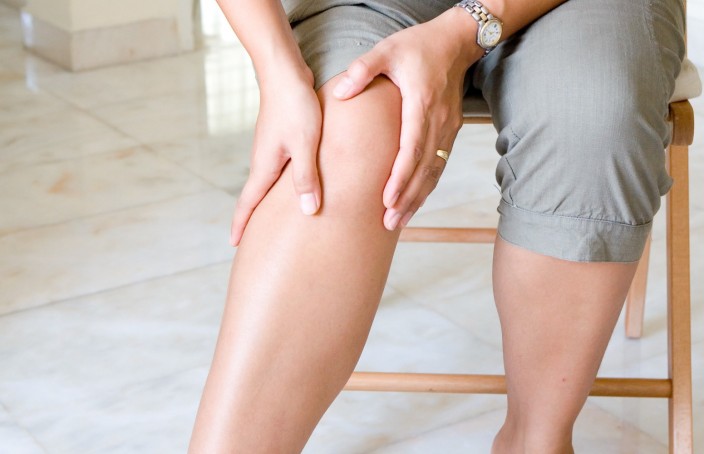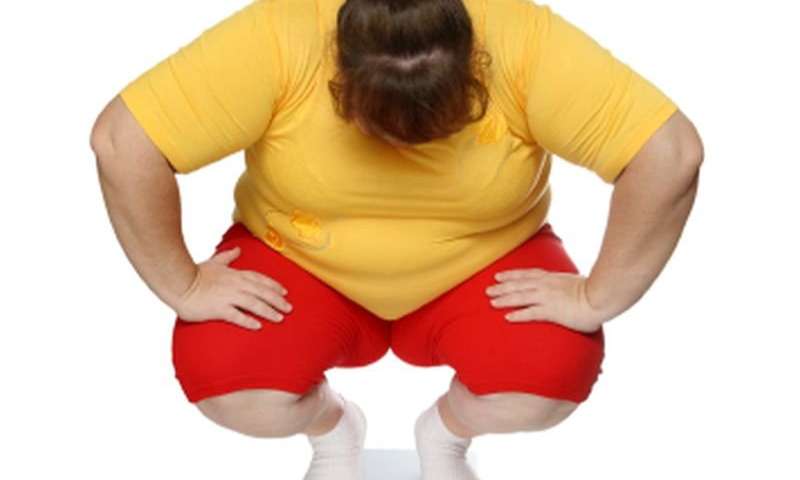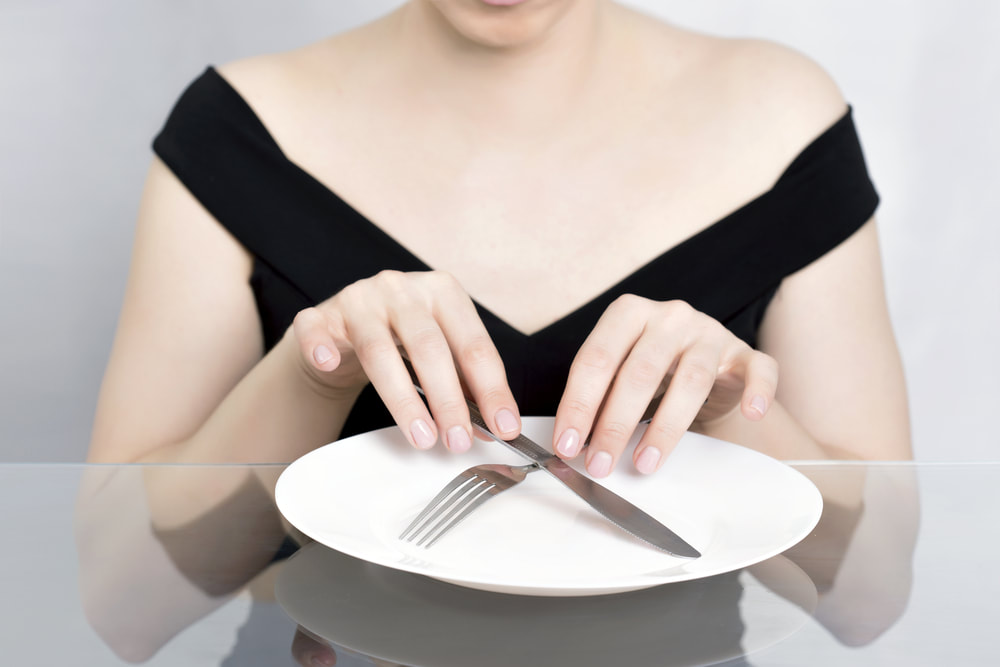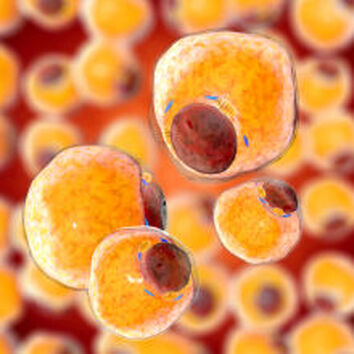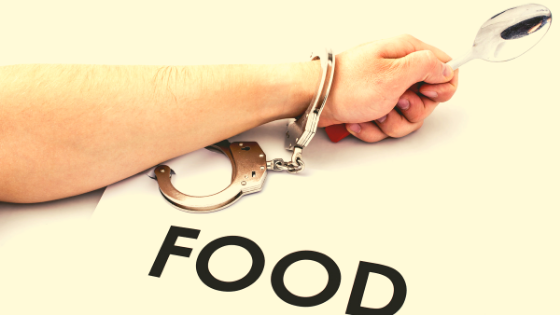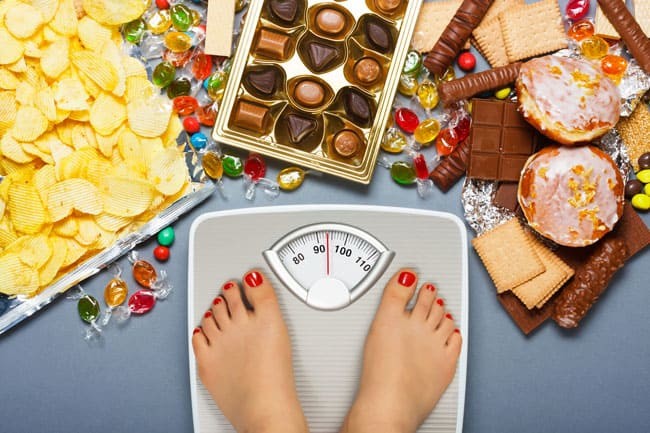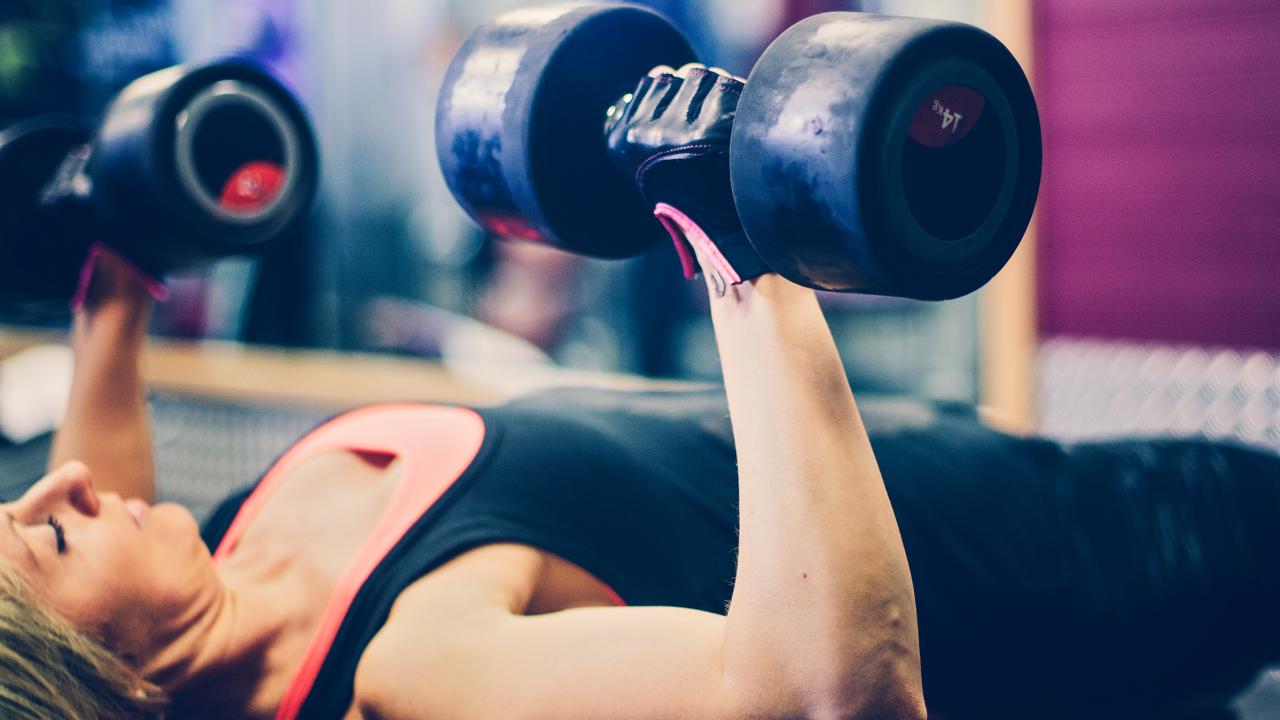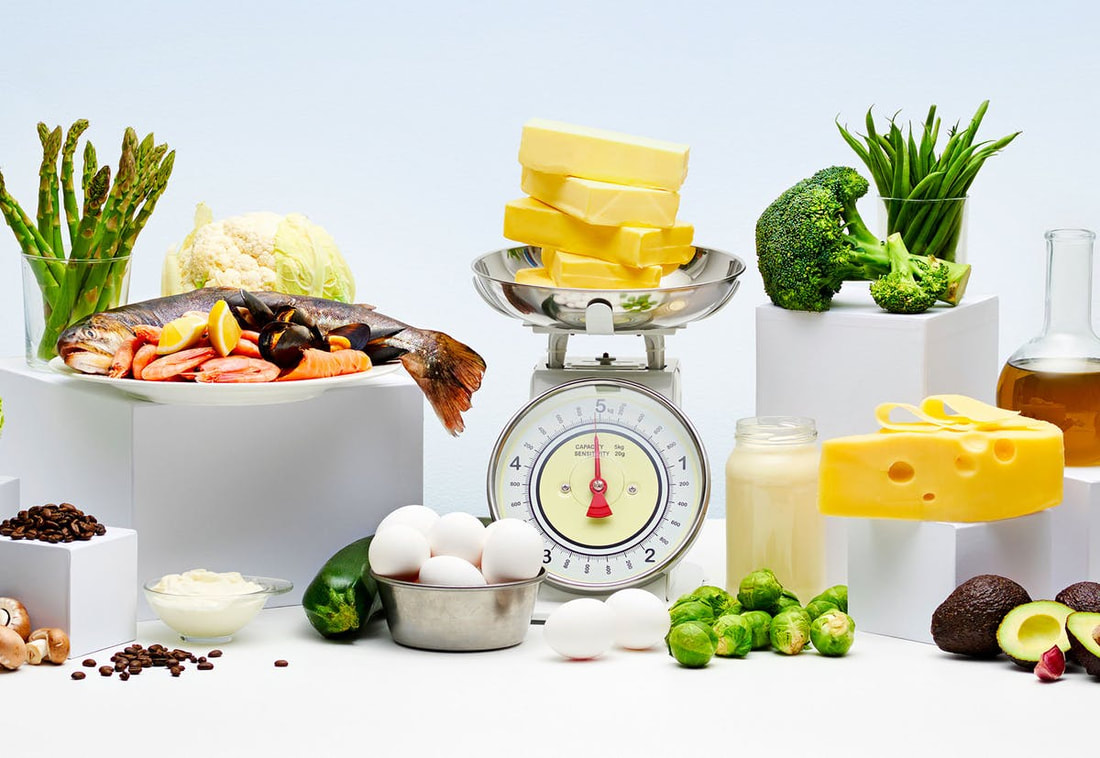|
The gut bacteria in your stomach has the power to influence your mood, affect your immune system and alter your metabolism. In short, it has the reigns over you and your life. There are millions of bacteria inside the human gut and these exist with viruses and fungi to form the microbiota or microbiome. Not all bacteria and viruses are bad. There are many of those that are healthy for our body helping us to keep ourselves in tip-top condition. Not every human has the same set, combination or an equal number of these gut microbiomes. Each of us have our own unique combination of bacteria, fungi and viruses whose existence is determined by a number of factors such as our mom’s microbiota, the environment that we are born into and also depend upon our diet and lifestyle. While these microorganisms are present all over the body, it's those that exist in the gut that have a bigger share on our health and wellness.
Bacteria Overgrowth Gut bacteria are predominantly present in our digestive system lining the intestines and colon. The quantity of these organisms and their quality too play an important role in affecting our health. There are research evidences showing that the gut bacteria in healthy people are different from those with diseases. Such people with illnesses have too little or too much of a particular type of bacteria which prevents the equal presence of other types of microorganisms. As we know, some are protective of our health while others promote illness. Having too much of illness-promoting bacteria or too little of health-promoting ones both result in disastrous consequences on our health. If you wish to get healthy gut bacteria the key to it lies in your diet and www.firsteatright.com is the perfect place to start working on this goal of yours. One of the common side effects of such imbalance is inflammatory bowel syndrome where these individuals have lower levels of anti-inflammatory gut bacteria. The unhealthy bacteria has the ability to make our body affect our own intestines thereby paving way for diseases with open hands. Small intestinal bacteria overgrowth (SIBO) is a common disease occurring due to excess bacterial growth in the small intestine. This is very commonly seen in females, those with irritable bowel syndrome (IBS) and digestive problems. Domination of SIBO SIBO occurs due when bacteria travel from anywhere in the digestive tract to the small intestine or there is excess presence of bacteria due to unforeseen multiplication of these tiny specimens. A new study says that small intestine bacteria overgrowth is commonly seen in those with restless leg syndrome (RLS). Generally, SIBO occurs in not even 15% of the people living worldwide but the study that focused on people with RLS showed that all 7 of the volunteers with RLS tested positive for SIBO. Though the study was a small-scale one the positive results on all the participants showed the effectiveness of the bacteria on people with RLS. RLS is a condition that causes the affected individual to suffer from an overwhelming irresistible urge to move the legs and causes involuntary jerking of the arms and legs too sometimes. The symptoms are worse experienced after a definite period of rest, inactivity, after lying down or sitting down and are mostly present during late evenings or nights. Walking, moving around or staying active has the ability to minimize these symptoms or even totally relieve pain sometimes. While there are many who believe that a chemical called dopamine (responsible for muscle movement) might be the root cause for such involuntary actions there are other researchers who feel that RLS might be the result of iron deficiency. The researchers are taking this study a step further analyzing fecal samples for microbial composition. The participants were requested to fill a questionnaire concerning sleep and SIBO symptoms. Another study showed that of the 32 RLS participants who were tested, 69% tested positive for SIBO and 28% tested positive for IBS. The researchers put down three positive theories for such results. Firstly, it could be because RLS patients are immunocompromised or genetically predisposed putting them at a higher risk of SIBO. Secondly, it could be due to autoimmune changes or thirdly, SIBO inflammation can lead to CNS iron deficiency thereby increasing the risk of RLS. But these need further research to prove anything.
0 Comments
Man can mimic God by cloning or by even making test tube babies but altering gene sequences and recreating genetic codes haven’t been successful until now. Maybe that’s why though we have been able to unravel the obesity gene we have not been able to do much to change its inception in humans. Obesity exists as a global public health concern putting the quality of life of millions of people at stake and paving way for numerous health problems that wouldn’t have seen the light of day otherwise. We now live in a world which has its lifestyle rewritten and daily routines modified to suit personal goals. For instance, shift work has become extremely common, fast food indulgence is almost seen in every person living in this world and sedentary lifestyle has taken over the active form due to scientific advancements and technological improvements. Obesity has become a challenging condition to control now as it is the effect of interactions between a person’s genetics and lifestyle.
Even kids these days are aware of various fad diet trends that’s taking the Internet by storm and grabbing the attention of individuals. One day it’s the Paleo diet, the next day it is intermittent fasting and some other day it is time for yet another new diet fad all of which are never approved by our physicians and health experts. All that doctors recommend are following a healthy diet plan that restricts total calorie intake depending on a person’s height and weight besides suggesting physical activity routines that suits the individual. But the confusion arises in terms of the types of exercises that best promote weight loss in those predisposed to the obesity gene. The attraction of walking and swimming is over as we now have innumerable exercise trends hovering over us every single day of life-HIIT, burpees, power yoga, boot camps and so on. Having external help in deciding over the best exercise forms that could provide maximized benefits would go well with the individuals as they are spared of the trial and error methods that help them find the best physical activities that could suit their body needs. A study by researchers of the National Taiwan University comes as an intense relief to all of us as this research has identified the types of exercise that help in wading off the genetic effects that contribute towards obesity. The study included 18,424 participants aged between 30 and 70 years focusing on the interaction between the individuals’ genetics and self-reported exercise routine. Every participant was questioned on his/her personal information and lifestyle factors. Exercise included only those activities such as jogging, swimming, cycling, mountain climbing, yoga, dance, playing basketball, etc., and occupational activities such as physical work or heavy manual work was not included as performing ‘exercise’. The research team specifically focused on five critical measures of obesity including body mass index (BMI), body fat percentage and waist-to-hip ratio. Results showed that jogging was the best form of exercise to combat obesity when compared with the five critical measures of obesity followed by walking, power walking, mountain climbing, dancing and long yoga practices that reduce BMI in patients who are at an increased risk of obesity. It was noticed that cycling, swimming, dance and stretching exercises did not work against the genetic effects of obesity. This study clearly shows that having a genetic predisposition to obesity is not the end of world nor does it brand a person to be overweight/obese forever. Performing various exercises certainly is effective against obesity. Though we do have a number of other studies that displayed that regular exercise certainly nullifies the genetic effect on obesity all of their attention was solely focused on BMI but the current one also focuses on four other critical measures that have a strong link with metabolic problems. Such studies are the need of the hour as obesity rates are skyrocketing and their side effects are becoming graver by the day. If you are suffering from overweight/obesity problems get in touch with reputed dietitians and nutritionists at www.firsteatright.com who can help you lose weight in a scientific and practical way. 50% of parents are dads but still 99% of research on parenting focuses solely on the mothers! This is indeed frustrating and depressing for the dads who are trying to engage themselves in as much childcare as possible to the extent that many of them are even ready to become stay-at-home fathers to devote their entire attention to the child. Gone are the days when mothers held sole responsibility for bringing up children, teaching them good behaviour, attending to their educational needs and tracking their progress in life while a dad’s primary aim was to provide strong monetary support to ensure that his family’s needs are met. How many of you remember the days when 80s and 90s kids roamed around the streets wearing t-shirts with a caption stating “MY DAD IS MY ATM”? Now, the situation has progressed or even been reversed such that moms love providing kids with money while dads take pleasure in keeping their young ones happy and content showering them with love and affection. The idea of a ‘good father’ has seen a stupendous change over the decades and dads these days are supported for being sensitive, caring and attached. Researchers have now started showing genuine interest in the role played by a dad in his child’s life and how he can contribute towards well-being of the kid.
Celebrating the Birth of the Kid: Society’s Clause on Male Gender Maternity leaves and the politics behind them have been unending and it has been only during recent years that some blessed women have started enjoying increased maternity leaves. Paternity leaves have never been a topic of concern and dads were never expected to take leave and stay at home with the wife and child. That’s how the male gender has been groomed by their parents! Guys availing paternity leaves might be looked down as being too emotional or it is even seen as a sign of emasculation. In Australia, only one dad of every 500 moms avail this leave, in the UK 40% dads choose not to avail the leave and in the US 76% men take lesser than a week’s time off after the baby is born. But if you are curious on what’s so important about the paternity leave then you are in for a surprise! Research tells us that fathers are happier around their kids when it comes to childcare and that’s mainly because of the different roles played by both the mum and dad in the child’s development. We might be happy that dads these days come forward to offer childcare but we don’t see many of them changing their kid’s nappies or putting them to bed. It’s mostly the mums who do such work while dads enjoy playing outside with kids or taking them around. Paternity leaves help mums take some time off their stressful routine, help the dad establish an emotional connect with the child, learn all aspects of childcare including changing nappies and also gives the woman much more strength and a positive feel to return to work and excel. Dads who take paternity leaves experience more satisfaction as they get more time to spend with their kids. The Fruits of Increased Father-Child Time “Daddy only” time has a significant positive impact on the baby as the child connects emotionally well with the dad and dads too experience a hormonal boost when caring for their child. Research shows that babies with emotionally engaged dads show better mental development as toddlers and are less likely to suffer from mental problems later in life compared to other babies. In older kids too, those whose fathers display emotional support are more satisfied in life and also express better relationships with teachers and other kids at school. Kids whose dads are involved right from birth display better cognitive skills and experienced fewer behavioral difficulties. Dads who take up paternity leave develop parenting instincts as good as the mums (https://www.theguardian.com/commentisfree/2015/apr/10/want-better-dads-happier-mums-and-healthier-kids-make-men-take-paternity-leave). Its even been shown that the more time working fathers spend time with children likelier they are to get more satisfaction on the job and less desire they have to shift to another organization. Men spending more time with their kids feel better about their jobs (https://www.forbes.com/sites/susanadams/2015/01/12/the-more-time-dads-spend-with-their-kids-the-happier-they-are-at-work/#37311db1cc3b). Its also been observed that parenthood brings about increased well-being of dads compared to moms. Fathers experience elevated levels of well-being, satisfaction, competence, autonomy and uplift compared to mothers and other men without children. Men also were found to be happy caring for their kids compared to performing other daily activities. Parental leave helps dads take up more childcare activity and this helps improve the well-being of the mother too who always has the notion that there is an uneven allocation of labour between the two genders and this is in fact true. It is time that men around the world start taking Finland as an example, the only country where fathers spend more time (an average of 8 minutes more daily) with kids than mothers. Every dad today wishes to spend more time with his kids, is ready to opt for flexi work timings, work from home jobs and even compromise on work time to be happy with his baby. By doing this, he is offering more scope for the mother to focus on her job that gives her satisfaction and a sense of completeness. There are few fathers who still believe that it’s a mother’s job to take care of the kids! Parents are looking out for a work-life balance that needs to be understood by the employer as well to reap greater benefits from his employees. Dds, you are heading towards the right path by wanting to spend more time with your newborn and young kids which makes you happier and satisfied in life. Cheers to all the dads who love parenting and are supportive to their spouses sharing childcare jobs. It doesn’t stop with providing financial support but has to be extended to emotional support and physical presence as well. References Parenting is More Likely to Make you Happy if You’re a Man: https://psmag.com/social-justice/parenthood-more-likely-to-make-you-happy-if-youre-a-man Finland: The Only country Where Fathers Spend More Time with Kids than Mothers: https://www.theguardian.com/lifeandstyle/2017/dec/04/finland-only-country-world-dad-more-time-kids-moms Children Make Parents Happy, After All: https://www.economist.com/international/2019/07/10/children-make-parents-happy-after-all The Secret of Being a Good Father: https://www.bbc.com/future/article/20190606-how-to-be-a-good-father-to-a-newborn-son-or-daughter It’s not surprising to see elderly people live well into their 80s and 90s these days, following an active lifestyle and brimming full of energy. Though not something new, various studies keep reminding us that what you eat and how active you are exist as critical factors that affect the quality of life of an individual, especially aged individuals. Even if you have been not eating right your entire life no age is too late to start all over and eat right. That’s because, you get to reap the benefits of improved nutrition and fitness anytime you start following it. While younger years are built upon the energy provided by the food we eat, our food choices become drastically important in defining our health as we grow older.
Quality & not Quantity becomes Pivotal as We Age Individuals normally eat well through their adolescent years and as young adults too. But as you cross middle age there is a need to cut down on portion sizes and once you grow older there is tremendous pressure to cut down calorie intake but maintain your quality of the nutrients that you eat. In fact, older adults need more of certain nutrients such as calcium and vitamin D for optimized health-both mental and physical. So, every morsel of food that goes into the mouth of senior citizens must be nutrient-rich to fulfill such demands. The elderly people depend on their saved money to lead their life and acquiring quality foods to fulfill nutrient needs might be a problem to some. We even have research showing that socioeconomic status of people determines their choice of foods and nutrition quotient of these foods. If you are one of those suffering from such problems learn to choose wisely. There are a number of options to fulfill your nutrient needs without spending much out of your pocket. Old age is not the best period for fad diets, intermittent fasting or very low-calorie diets. Such diet changes might put you into more trouble as they tend to ignore many of the food groups causing a nutrient gap in your meals. Nutrients play a definite role in defining your health and an imbalance in nutrient intake would result in health problems. Rapid weight loss also leads to loss of lean body mass that’s dangerous for the health of the older people. The best is to eat within your calorie limits. If you wish to lose weight it should never be done on your own but only after consulting your healthcare provide or a registered dietitian nutritionist (RDN) who is the best person to balance your calorie needs, weight loss requirements and nutrient fulfillments. Get in touch with reputed RDNs at www.firsteatright.com to help you with your weight loss goal. Pulsating Protein Each of us require a generous share of proteins throughout our life to keep us in good health. As youngsters there would have been a period during which our entire focus was to eat plenty of protein-rich meals to grow muscles and look strong. Whereas, the same goal fades away as we age and elderly people are the ones who get the least amount of this nutrient. Many of them don’t get enough of proteins to maintain muscle mass, fight infection and bounce back after a surgery. Even if they do wish to eat proteins, many find it difficult to chew on meat and other protein-rich foods. But mind you, meat is not the only go-to protein option but you have got aplenty others. Enjoy a bowlful of beans and other pulses, spread a generous serving of peanut butter onto your whole-grain crackers, mix low-fat cheese with your scrambled egg or add more milk to your soup or cereal rather than using water. By eating healthy food, going for regular activity and staying relaxed you age gracefully, happily and in a more pleasant way. Maybe its time now to change our warning messages before movie screening from showing the harsh effects of smoking to the devastating consequences of obesity in our lives. All the while there has been innumerable talks and write ups about obesity, its rise as a public health concern and how it became an epidemic. Time and again health experts warn us against its debilitating side effects, how the world has become unhealthier and this exists as the primary reason behind highest ever heart attack rates and more. What has been our contribution towards ending this epidemic? More gym memberships, increased prevalence of fitness centers that boast of hi-fi equipment, westernized physical activity schedules, higher number of eateries that charge exorbitant prices for providing healthier options of foods (such as wheat/ragi dosa, quinoa rice or low-fat cheese pasta). Despite such efforts we are heading nowhere in terms of controlling obesity rates-almost 1 in 3 individuals are obese!
Smoking prevails as a risk factor for a number of diseases and every physician enquires about our smoking and drinking habits before coming to conclusions regarding our health problems. But the same questions are not raised in terms of obesity-how long we have been above normal weight ranges or whether our cholesterol levels have been sustainably high for a longer period. Healthy competition is always appreciable and encouraged as it motivates individuals to fight against each other for better prospects in life when it comes to humans. But what about the same kind of competition between obesity and smoking? While thinking about the consequences seem dangerous to be frank, its effects are now visible in real life. Obesity Serving Cancer with Open Hands Smoking still exists as the number one cause of cancer worldwide but obesity has beaten smoking as the major cause of bowel, kidney, ovarian and liver cancer which is traumatizing to hear! Both are modifiable risk factors-we weren’t cautious with smoking and now we have been reckless with obesity as well. Smoking is an addiction and are we doing the same with eating as well? Well, maybe so. Comfort eating has dominated our lives and this paves way for dramatic calorie intakes. New statistics from the Cancer Research UK shows that people who are obese now outnumber smokers with a two to one ratio in the UK and excess weight causes more cases of certain cancers than smoking. While you might now have a smile as this is the state of only UK the same trend is sure to happen in other countries in near future. Its been shown that obesity causes 1,900 more cases of bowel cancer than smoking in the UK every year followed by kidney (1400), ovarian (460) and liver (180 cases) cancer. Researchers blame this on excess body fat that sends out signals to cells to divide more often and cause damage which over time raises the risk of cancer. Obesity causes 13 types of cancer. Smoking rates have come down drastically thanks to innumerable campaigns and advertisements that focus on the health hazards involved due to this dangerous habit. Maybe we need such campaigns and ads broadcasting the side effects of obesity as well to bring down overweight/obesity rates. Understand the debilitating effects of obesity from www.firsteatright.com and take up a suitable program to set right your lifestyle habits. There is so much struggle going on because of our present set up which advocates the consumption of junk food. We can bring in changes from our end by swapping them for healthier options and staying active by doing physical activity regularly. The government should also bring in changes from their end to improve the present situation and make it a lot better. Understanding people and judging their emotions is an art that not everybody excels at. Intelligence can be acquired but emotions must be fairly natural to the individual. Many might post an affirmative reply if they are questioned on their intelligence but how feasible is it to get such affirmations when the same people are probed into their emotional intelligence? You might give yourself a distinction in all these but where exactly do you stand in terms of emotional intelligence?
Emotional Intelligence (EI) Foremost important is to understand what we mean by emotional intelligence. EI is the ability to recognize, understand and manage our emotions while recognizing, understanding, managing and influencing the emotions of others. Its all about being aware of your feelings, understand how your emotions affect your decision-making perspective and how they impact your interaction with others. There is more to EI than being nice, soft and amicable to others. Its all about realizing what’s happening in the spur of the moment and using your emotions to put back things in place. Individuals with high emotional intelligence are more open to thoughts and suggestions, have the ability to look at things from a different perspective and are more equipped to handle challenges by overcoming hurdles that surround them. In general, people with EI are happier, healthier and effective. While people might be recruited based on their intelligence and aptitude the same guys are often terminated for lack of emotional intelligence. The need to understand people, interact with them, motivate individuals to be better workers and influence their thoughts and actions is critical for success of the organization and in turn the success of the employee. An employee who lacks these skills is no asset to the company despite his enriched intelligence. People management too is absolutely necessary for surviving through the thick and thins of the company without which there is a persistent risk of being thrown out of the organization. Are you Emotionally Intelligent? There are different things that analyze your EI level.
Becoming Emotionally Stronger Rather than introducing the concept suddenly it is better that children are trained to recognize emotions, understand them and respond appropriately to help themselves and the opponent in dealing with it. If you wish to become emotionally stronger as an adult it is pretty difficult but not impossible. Surround yourself with different people, learn something good from each of them and grow up in life. Come up with strategies to manage your emotions, for instance for anger management it is best to plunge yourself into yoga or meditation and analyze how well they have influenced you and people around you. Yoga and meditation have been the go-to help techniques for handling a variety of things other than anger and stress. Learn more about their advantages form the website www.firsteatright.com. The way we think (positive or negative) also affects the way in which we think about others. Emotions are a strong feeling that have the ability to take mankind to a better state. When each of us appreciate others’ feelings, give space for their emotions, don’t restrict their own emotions too much and develop the skill to handle emotions the world would seem brighter and more positive. If delaying your meal by an hour or so is sure to make you hangry (hunger anger) then intermittent fasting is not your cup of tea. But, even if delaying your meal or skipping food altogether doesn’t bother you, is intermittent fasting (IF) a heathy approach to weight loss or even good health?
Humans need no reminders that we are living in a world that relies upon quick-fix solutions and shortcuts to everything as we lack the time, energy or motivation (as a matter of fact, this is untrue) to rather work efficiently and produce the desired results. Food and health play a pivotal role in providing our body with the required energy and when an imbalance is created in our food system the entire day-to-day processes are shattered. Amidst this chaos, individuals feverishly wish to get in shape, lose weight or tone down to look good rather than feel healthy sometimes. Such individuals focus on results rather than the process which might land a person deep in trouble and ruin nature’s gift to us-a healthy mind and body. Intermittent fasting has become the latest craze amongst people who love to lose weight rather quickly. Intermittent Fasting-Take a Break for Eating? Breakfast, lunch and dinner-three square meals a day with light snacks in between has been the ritual followed by most people across the world. Skipping any of the meals has the potential to cause dizziness, stomach rumble or more in some of us. How does intermittent fasting as a method of weight loss rule in favor of the people of this world? Intermittent fasting could be defined as an alternation between no food/minimal calorie consumption and periods of unrestricted eating. This can be defined more as a timed approach to eating rather than a fad diet with its history deep-rooted in traditional fasting that was practiced for spiritual purposes earlier. Fasting might include avoiding consumption of foods/beverages for more than 12 hours continuously or involve reduced consumption of certain foods/drinks. Getting into a diet routine can prevent weight loss after certain months/years of diet practice whereas intermittent fasting eliminates this problem by cycling between periods of eating food and starvation. Despite this, we don’t have definite proofs that intermittent fasting is a better approach comparatively. Cycling between Eating & Fasting There are several types of intermittent fasting practiced: Alternate Days: This involves alternating between days of normal eating with days of consuming only one meal that provides about 25% of the calorie needs of the day. For example, if you eat normally on Monday, you take only one meal on Tuesday that satisfies 25% calorie requirements. 5:2 Approach: This is a famous practice where individuals eat normally five days a week and fast for the remaining two days. It could either be complete starvation on these two days or they might consume 25% of the calorie requirements for the day which amounts to almost 500 calories. Time-based Fasting: This involves fasting on all days of the week based on particular timings. For instance, the person might eat a meal between 10 am and 5 pm while fasting during the rest of the day. This time frame might change every week or so. While there have been studies and research conducted on intermittent fasting as an effective method to weight loss, we don’t have strong and conclusive evidences supporting it. In fact, the effect of intermittent fasting and other forms of diet have proved to be the same in the long run with respect to weight loss, weight maintenance or differences in blood pressure, glucose or heart rate. The Final Word A practical and scientific approach to weight loss would be to burn more calories than you consume by eating small portions frequently. The foundation of Intermittent fasting is totally opposite and hence, this brings about the question of whether IF can be treated as a sustainable and a healthy means to either lose or maintain health. On the contrary, it is not a sin to fast occasionally as this was the norm practiced during olden times when people missed out on meals for hours or days together as fetching food was a difficult task back then. But this approach can never become a reality for individuals who practice eating small portions frequently or even for those with certain medical conditions such as diabetes who ought to eat their meals on time. Other groups of people who MUST abstain from practicing intermittent fasting include pregnant and breastfeeding women, adolescents in their growing stage, people who take medications for conditions and those with eating disorders. Individuals who eat only two meals a day or leave a long gap in between meals might be able to comply with the rules of intermittent fasting. We cannot deny benefits such as lowered insulin levels which prompts the body to use stored fat resulting in weight loss, reduced blood pressure and total cholesterol levels. IF does not affect the ability to exercise too once the body adjusts to the new eating schedule. If losing muscles is a concern ensure to eat enough proteins when you are in the eating period and practice resistance training. Many of us have fasted even without our own knowledge during many occasions. For example, we would have had an early lunch and skipped our dinner after work due to work schedules. At the same time, intermittent fasting does not have the same effect on all kinds of people. Although we have impeccable data supporting the advantages of IF in rats, we don’t have the same in humans. But research studies do suggest that it’s the timing of IF that is crucial which can make it a practical, sustainable and realistic approach to weight loss and even an effective tool against diabetes prevention. Until then, we cannot recommend intermittent fasting as an effective tool against weight loss. Children are replicas of their moms and dads mostly with some of them not bearing any attributes of their parents which is rare. Personality and characteristic trait are genetically transferred which makes us gloat with glory when the child behaves like his/her parent. Reproduction is an indispensable part of every person’s life that adds meaning to our existence and helps in taking our family’s virtues and ideologies to future generations as well. But sadly, most women in reproductive age worldwide suffer from obesity/overweight and so do younger adults, adolescents and kids. Such high prevalence of obesity during early years has been attributed to several risk factors that affect early during pregnancy in the form of higher maternal pre-pregnancy body mass index (BMI) and excessive gestational weight gain. These risk factors are modifiable ones but when left untreated they do have a serious effect on the infant size at birth and obesity risk later during life. We also have numerous studies showing that maternal obesity/overweight during pregnancy pose as significant risk factors for higher birth weight and neonatal adiposity and also for childhood obesity later. The pregnant mother is the sole means through which the developing fetus acquires all nutrients needed for normal growth and development but maternal pre-pregnancy status and environment also play an equally critical role as pre-pregnancy obesity has the ability to result in foetal macrosomia (where the birthweight ≥4 kg). Once pregnant, the in-utero environment has an upper hand on foetal development including cognitive, organ development and deposition of fat. The environment in which the fetus develops determines the foetus’s genetic transcription affecting it differently depending on the stage of pregnancy. Its isn’t uncommon for the pregnant woman to develop gestational diabetes during any time of pregnancy and the mother’s carbs intake and increase in insulin insensitivity results in higher levels of maternal blood glucose which can be transferred to the fetus besides the foetus’s own insulin production that increases foetal growth and adiposity. Hence, maintenance of maternal insulin levels is absolutely necessary to avoid any deviation in foetal glucose levels. When such is the effect of maternal nutrient intake it is also equally difficult to impose restrictions and help the woman lose weight before pregnancy as most of the pregnancies go unplanned. But once pregnant it is indeed possible to regulate dietary intake levels of the mother-to-be as maternal dietary energy and protein intake affect neonatal anthropometry making food consumption an integral part of the pregnancy process. Gynaecologists prescribe supplements even before the woman becomes pregnant (such as folates) and these continue until delivery of the child. Though maternal micro- and macronutrient intake affects neonatal body composition we don’t have much data available in this field of science as there are quite a lot other factors including physical activity, socioeconomic status, stress, smoking and drug intake that affect foetal growth and development. The study elaborated below uses cohort from the ROLO (Randomised Control trial of Low Glycemic index diet versus no dietary intervention to prevent recurrence of foetal macrosomia) to study the effect of maternal body composition, demographic characteristics, macronutrient intake and lifestyle changes on neonatal weight and adiposity. Cohort from ROLO Study The present study used 542 mother and infant pairs from the ROLO study in which the mothers had given birth to infants with macrosomia previously and hence, were put on a low-glucose diet to decrease the recurrence of macrosomia. Results of the ROLO study showed that the intervention group experienced significant reduction in glycaemic index and load and also had lower gestational weight gain and glucose intolerance but birthweight or risk of macrosomia was not significantly reduced. All the 542 mothers underwent well-being tests, maternal weight, height, BMI and upper-arm circumference were measured during the first antenatal consultation with maternal weight measurements and gestational weight calculations performed during every subsequent consultation. Once the mothers gave birth, neonatal weight, height, mid-upper arm, abdominal, hip and thigh circumference, biceps, triceps, subscapular and thigh skinfold measurements were taken. This resulted in only 266 neonates having complete data of all the measurements taken. The pregnant woman’s macronutrient intake, glycemic intake and glycemic load was measured using a 3-day food diary given during each trimester of pregnancy. Cluster analysis of the food intake resulted in two main clusters of healthy and unhealthy individuals with regard to diet. While the unhealthy cluster ate more of refined foods, white bread, confectionary, chips, processed meats and high-energy beverages the healthy cluster chose to eat more of fruits, vegetables, cereals, fruit juice, low-fat milk and white meat. Dietary intake was analysed using a self-administered 170 item SLAN (Survey of Lifestyle, Attitudes and Nutrition in Ireland) food frequency questionnaire (FFQ) that was given during the initial stages of pregnancy and returned by 28 weeks of gestation. The data in the FFQ was in turn used to create a Dietary Approaches to Stop Hypertension (DASH) index with a score of 0 indicating total non-concordance and 11 indicating total concordance. A glucose challenge test (GCT) was done at 28 weeks of gestation. 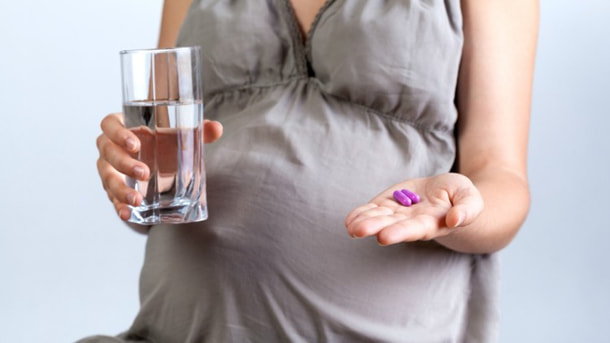 Supplements are a Regular Routine in Every Woman’s Life Supplements are a Regular Routine in Every Woman’s Life Result Maternal characteristics did not change between the control and intervention group except for gestational weight gain, glucose intolerance and maternal well-being score. There was no difference in neonatal weight, length or anthropometric measurements between the intervention and control group except in the case of thigh circumference measurement and in the case of neonatal waist: length ratio that was lower in the intervention group. The control group experienced more gestational weight gain than the intervention group. It was also seen that birthweight was associated with gestational weight gain, birth length was negatively associated with maternal smoking, neonatal abdominal circumference was positively linked with maternal saturated fatty acid (SFA) intake which showed a negative trend as the association switched over to polyunsaturated fatty acids (PUFA) intake in trimester 3. Neonatal thigh circumference was negatively associated with frequency of strenuous physical activity, neonatal chest circumference was positively associated with maternal weight and negatively associated with frequency of strenuous physical activity. Neonatal subscapular skinfold thickness was negatively associated with PUFA intake in third trimester, neonatal waist circumference: length ratio was negatively associated with maternal age and positively associated with maternal smoking and maternal mid-upper arm circumference (MUAC) in early pregnancy. The study clearly shows that maternal diet and lifestyle factors were positively associated with the neonate’s body composition. It also shows the significant changes associated with the intake of different foods thereby proving that neonatal central adiposity was positively associated with maternal dietary saturated fat and negatively associated with low GI intervention groups. Healthy Start Study An observational, pre-birth cohort study was done on 1,410 pregnant women aged 16 years and above prior to 24 weeks of gestation after implementing various exclusion criteria. These moms participated in two research visits during pregnancy-the first visit occurred between 8 and 24 weeks of gestation and the second visit occurred between 24 and 32 weeks of gestation while a third visit happened at the hospital after delivery. The newborn baby’s weight, length, head circumference and skin-fold thickness were measured within 72 hours after delivery and the neonatal body composition, fat mass (FM) and fat-free mass (FFM) were calculate from total mass and volume. Maternal pre-pregnancy BMI was calculated using weight measurements and the woman was categorized accordingly and her physical activity levels were measured using a Pregnancy Physical Activity Questionnaire. The diet consumption of the pregnant woman was assessed several times during the study and its quality was assessed using the Healthy Eating Index-2010 that consisted of twelve components giving a maximum score of 100. The study showed a HEI-2010 score between 18 and 89 with a mean of 54.2. Women with a score ≤ 57 were likelier to be obese and have reported of smoking during pregnancy. Lower diet quality was related to younger maternal age, shorter length of gestation and higher energy expenditure. Also, those neonates born to women with this score also had significantly lower birth weight and fat-free mass (FFM) but there was no difference in birth head circumference or birth length between the two groups. Results showed that energy intake as fat and saturated fat was significantly higher in the group with an HEI total score ≤57 but at the same time empty calories were also significantly lower which is a surprising one! Also neonates born to these women had .58% higher fat mass (FM) compared to neonates born to women with a score ≥57. But women with a score ≤57 had no significantly different FFM proving that an increased %FM linked to lower maternal diet quality shows an increase in neonatal FM rather than a decrease in FFM. This large pre-birth cohort showed that lower diet quality had a greater impact on neonatal adiposity, neonates of women with lower diet quality had 24.9 g more fat mass comparatively. Hence, poor maternal diet quality has the ability to increase neonatal adiposity regardless of maternal BMI. Another study on Middle-Eastern women showed that women having a pregestational BMI were at a 2.5 times higher risk of giving birth to low birth weight infants and having a smaller birth height compared to women with a normal BMI while obese women were at a 7.44 times higher risk of giving birth to macrosomic infants compared to women with a normal BMI. References Maternal Low Glycemic Index Diet, Fat Intake and Postprandial Glucose Influences Neonatal Adiposity-Secondary Analysis from the ROLO Study: https://nutritionj.biomedcentral.com/articles/10.1186/1475-2891-13-78 Maternal Diet Quality in Pregnancy & Neonatal Adiposity: The Healthy Start Study: https://www.ncbi.nlm.nih.gov/pmc/articles/PMC5356926/ Impact of Maternal Body Mass Index & Gestational Weight Gain on Neonatal Outcomes among Healthy Middle-Eastern Females: https://journals.plos.org/plosone/article?id=10.1371/journal.pone.0181255 The universe is filled with people busy doing nothing or doing many things simultaneously. If you are one of those juggling frenzy work schedules (working around 14 hours every day), focusing on part-time jobs along 9-5 work schedules, attending correspondence classes along with office work or constantly on wheels owing to office commitments, your wish to lose weight might seem to be a distant dream and a futile scream-at least from your point of view! Some might use these back-to-back commitments as an excuse to stray away from exercise commitments. Busy or not, your body weight doesn’t pity you for your restricted time availability.
Life is a crazy wheel that spins incessantly until your death. Whether you are busy at work, occupied with household chores at home or a socially-active person, it is understandable that life doesn’t seem simple enough to fit exercise routines in between your over-packed responsibilities but exercise can be your stress-buster that helps you sail through busy work routines. There are a few adept ways in which you can skillfully balance exercise routines and other commitments. Simple Tips to Ensure that Your Exercise Routine Clicks Be a Smart Worker: How long you work out doesn’t determine how much you lose weight. The intensity and accuracy of the physical activity speaks much more than the tick of your clock. Use your restricted time effectively by actively engaging in vigorous-intensity workouts. Be an Early Bird: An early-morning workout leaves space for no excuses that might crop up during the rest of the day. Physical activity in the morning keeps you pumped up with energy to handle the day’s events and also avoids busy schedules and tiredness from obstructing your weight loss plan. It is never easy to creep out of your cozy bedsheets just to walk or jog. But once you follow this practice for a couple of days, it becomes a part of your routine. Please Don’t Eat Out: Meals consumed outside fill your calorie requirements for a day in one meal. The portion sizes offered in most restaurants can easily satisfy hunger needs of two people. Dine out less-frequently and when you eat a meal at any restaurant ensure that you share it with another person. Weekends are no Excuses: Its time to grow up! Instead of lazing away during the weekend why don’t you use the weekend to make up for the lost weekday workout schedules? You can even plan for a workout date with your bestie or a group of like-minded friends who would love to join you for a refreshing exercise session at the start of the weekend. Maybe it sounds bizarre for those who are used to late-night partying but there is not a better way to start your weekend than by exercising. Stand When you Can: There have been articles and research studies buzzing around the fact that sitting too long can affect health. But now, we also have research studies showing that standing continuously is equally bad for health. Its not possible to stand and work until your company provides you with a standing desk. But you can surely stand and do simple workout while watching television, be on the move while speaking with your friend/family over the phone or even arrange for walking meetings at office. Walking meetings are the latest trend which have ample benefits on an individual apart from helping him/her move more. If you are inquisitive and ardent enough to read about the other benefits you must surely take a look at them at www.firsteatright.com. Divide & Conquer: If you cannot squeeze in 30-60 minutes of exercise time together there is nothing wrong in breaking up your workout schedules. Plan for three 10-minute schedules spacing them at three different times of day-morning, noon and night. If you can do it even for five days a week this would have a significant impact on your health. Do simple workouts whenever you get time. It might even be for 2 minutes. But when you fit in five 2-minute workouts during the day you have achieved an extra 10-minute workout altogether. Every Effort Counts: Try to do away with the concept of ‘all or nothing’. Many people either strike to achieve 100% perfection in their diet and exercise plans or ditch them altogether. There is no hard and fast rule that if you have missed a day’s exercise session you can miss out on your diet too. Every small action counts. Rather, when you miss your workout maybe you can go for a smaller portion of meal and take a fruit along with it. Nobody is perfect in this world and the truth remains that none can live perfect forever. Try to accommodate your exercise routines wherever possible and bring in small tweaks to them when time demands. We believe what we see and trust our eyes utmost. A kind gesture by someone right in front of our eyes moves us and we form a positive picture about the individual involved in the act. Hearing something offensive about the same person doesn’t deter our spirits unless we are sure beyond doubts! This is true not only in this regard but in different other aspects of life as well. For instance, we hear about the ill effects and the risks associated with obesity/overweight in the form of diabetes, cardiovascular disease or cancer; health experts and physicians do suggest controlling portion sizes, reducing junk food intake and eating healthy foods to stave off side effects of obesity and newspapers/magazines repeatedly trying to create awareness among public regarding the excess calories present in our juicy burgers, cheesy pizzas and ‘garam’ samosas! But ultimately our minds are like pendulums wavering all the time and we never pay heed to such advices. All these could and would change if we witness the effects of obesity in any of our immediate family member-this awakens our minds and pushes the danger button within each of us to safeguard our health! But isn’t it cruel to learn a lesson after the demise of someone’s health? All this makes one thing clear-we react and act when something happens right in front of us. So, why not use the same concept to help individuals become healthier citizens as well?
Counting Calories to Chop Them Off The advent of weight issues led to the birth of healthier versions of different dishes, salads and more whose recipes often contain total calorie values sometimes explicitly stating each of the nutrient’s share. This helps us pick our suitable dish that satisfies our taste buds without compromising on health. But the same details have been present in bar chocolates, different processed foods and baked good treats that sit on supermarket aisles which we have comfortably been ignoring until now. So, even the mention of total calories doesn’t make an impact on us anymore. Maybe labelling food and drinks with the amount of exercise needed to burn off the calories present in them could help combat obesity. This is the result of a study by a group of researchers from Loughborough University who found that Physical activity calorie equivalent (PACE) labelling reduces the number of calories consumed. A fizzy drink contains 138 calories and instead of showing the numbers in print simply when the same is displayed using symbols stating 26 minutes of walking or 13 minutes of running is required to burn down the calories this would indeed create a better impact on the individual consuming it. The person might even rethink his/her decision to buy the products which would otherwise go into the shopping product without any hesitation. So, under the PACE system a small bar of chocolate would carry information that it would require 23 minutes of running or 46 minutes of jogging to burn off 230 calories that’s present in it. According to the researchers, PACE labels could help cut down calorie consumption by up to 200 calories per day for an individual-people are less likely to buy a soft drink, select 70 fewer calories and eat 80 fewer calories when food and drinks are PACE labelled. Individuals gain weight gradually by steadily eating a few more calories than they burn off daily and such labelling might make any individual think twice before buying anything. Obesity is never monopolized by food lovers but might strike any of us who eat a little more than what’s essential. Again, it’s essential to note that calories aren’t the only nutritional aspect to consider and health is a combination of several things-calories, nutrients and the type of preparation. A small chocolate might contain fewer calories than chicken sandwich but the nutrients in the sandwich are dense and needed for health. It is always better to choose the sandwich instead of the chocolate for a fulfilling meal experience. Choose your foods wisely, exercise daily, eat optimal portions and lead an active lifestyle to stay healthy and in normal weight ranges. Get in touch with dietitians and nutritionists at www.firsteatright.com to help you eat within your designated calorie limits and lead a healthier lifestyle. In theory weight loss looks extremely simple-burn more calories than you consume but in practice it needs greater willpower and patience. Maybe if people are challenged or guaranteed a reward for restricting their food intake and losing weight it would turn out to be a peppy affair. Surrounded by delicacies, open to a variety of tasty treats and having your hands full on choices its extremely difficult to curb yourself from eating all these foods around you. In fact, I sometimes wonder that it’s a blessing that people are not heavier than what they are now! Besides this, individuals lead a far more sedentary lifestyle and expel fewer calories than their previous generations.
‘Eat to live’ holds good no more. More than a means of survival food is considered to be a source of satisfaction, a reward for some achievement or a means to drown away your sorrows. This is one of the main reasons why no kind of a diet plan works successfully in the long run mainly because these plans don’t bring in alterations in your existing meal menus but introduce something very new that’s hard to follow practically in the long run. More than losing weight it’s maintaining the lost weight that’s a nightmare for many. Every nightmare has a great morning to fall upon likewise every failed attempt of weight loss has an alternative plan to help us get going in the right direction. Don’t diet but control portions: Eating is for the wellness of the body, for the essential nutrients to be added for improving fitness levels and improving overall health. Please don’t eat food just for the sake of weight loss. Include plenty of fruits, veggies, whole grains and a limited portion of healthy fats too. Your body requires all the three macronutrients-carbs, proteins and fats-in selective portion. Ignoring fats does no good for your body in fact, it might often result in side effects. Even studies show that people who eat healthy fats control their weight in a better way than those who curb their intake. Eat all kinds of foods but remember to control your portions. Ensure regular physical activity: Alas! You’ve once again heard of the same old mantra-do exercise. However bored or pissed off you might feel upon hearing this statement, a fact is a fact. Increasing activity levels helps to lose weight and also weight control in the long term remains ineffective without regular exercising. Body’s basal metabolic rate (BMR) decreases with age where bone and muscle mass decrease whereas fat mass increases. Its better to focus on different exercises which includes muscle building too apart from your regular cardio and aerobic exercises as muscle building helps to increase body’s metabolic rate. Juggle various approaches: One diet plan doesn’t work wonders for all of us. Take your time, experience different approaches and find the one that best suits you. One technique that seems to garner positive benefits for many include mindful eating which is nothing but being fully aware of the food you eat, relishing every mouthful and enjoying it. It also helps to place your fork down on the plate between mouthfuls and pick them up when you are going to eat the next bite. Cling on to your goals: There might be many failures before achieving success. Weight loss attempts too might result in failure multiple times before you reach your target. Focus and ensure that you never give up. Do something better every day and commit to eating a little more mindful than the previous day. Occasions might arise that put you off the track but its essential that you stay determined and revive eating practices even better than before. Stop not until the goal is achieved whatever mind hinder your progress. If you would like expert advise and suggestions on introducing portion control and changes to your existing meal plans that suit your body conditions please get in touch with dietitians and nutritionists at www.firsteatright.com. When was the last time you were glued to your television screen, laptop or mobile binge-watching your favourite series online? Today, yesterday or last week? Most of our answers would be within these three options and not go anytime backward. What starts as one episode of ‘Suits’ or ‘House of Cards’ becomes nothing less than 6-8 episodes. People have started calling in sick to work, college and schools just to complete the entire season at one go! Netflix and Amazon have completely transformed our viewing routines. What started as a weekly series in our televisions decades back are fed into our smartphones altogether in a jiffy. Times when all of us used to gather around the television to have a glimpse of our favourite TV actors every Friday or Monday has become a nostalgic memory. Such streaming services have in fact taken away the surprise elements offered to us. In fact, research even shows that binge watching episodes decreases satisfaction levels compared to viewing them at a normal pace! Alas, teens and millennials have glorified this phenomenon of binge-watching that those who don’t do it as seen as aliens from the outside world.
Friends with Benefits Binge-watching is nothing but the act of watching multiple episodes back-to-back. A 2014 Netflix survey reported that 61% users were habituated to binge-watching television regularly-anywhere between 2-6 episodes in one sitting but our friends have surpassed these numbers long back. The time has come when weekends are planned around our favourite online series, partying with friends is missed quoting several awkward reasons and negligible time is devoted to family members. Teens and youngsters walk like strangers in their own house with ear plugs constantly put on and their tiny little smartphones playing havoc with their lives. Some do it out of self-interest while most do it out of peer pressure-the fear of being left out in discussions and to stay updated in a WhatsApp chat about the latest updates in the series and comment on all others’ views. These people feel charmed and excited about staying up all night or all day (even without giving a loo break) watching online episodes contribute active participation in any discussion (https://indianexpress.com/article/cities/bangalore/bengaluru-significant-rise-in-binge-watching-has-medical-experts-worried-6029963/)! Friends even hang out at each other’s place to enjoy watching together with live comments and applauds. A Tornado on Health What has been glorified by TV fans has become worrisome to health experts across the globe as there are a greater number of binge-watching cases registered at hospitals bringing in various kinds of side effects after gaming and social media addiction. We have not one or two but too many reasons to stop this crazy act. People are awestruck by the array of content available online that the hours dedicated to fitness, socializing and sleeping have been replaced by continuous hours of binge-watching. As more and more cases of binge-watching have been reported only recently research on it is still in infancy stage but the limited proofs available constantly report poor sleep quality, tiredness, decreased concentration, increased fatigue and insomnia. Adults who watch more than three hours of television content doubled the risk of premature death compared to those who watched less. Sitting continuously for longer hours increases your risk of numerous diseases. Smoking and drinking are an addiction and so is binge-watching. We start with one episode in mind but don’t stop until we have watched 5-6 episodes. During such long viewing hours, we try to squeeze in snacks, lunch or even dinner and end up overeating. We become isolated from the outside world creating our own synchrony with life. What starts as an escape route from problems lands us with even greater problems. Once the binge-watching session has completed the viewer is left feeling anxious, empty and depressed. Studies show that binge-watching is linked to loneliness, affects mental health, prevents self-control and paves way for depression (https://www.theguardian.com/commentisfree/2016/mar/04/binge-watching-mental-health-effects-research). In a sleep-deprived world the act of watching episode after episode of TV series causes more sleeplessness. We have evolved to do best on a near 24-hour sleep cycle and a shift to a later cycle can cause difficulty in falling asleep, waking up and bring about a feeling of sleep deprivation (https://www.washingtonpost.com/lifestyle/wellness/how-binge-watching-is-hazardous-to-your-health/2019/05/31/03b0d70a-8220-11e9-bce7-40b4105f7ca0_story.html). Many have this bad habit of watching an episode right before sleeping and this is a bad idea completely. According to psychologists, binge-watching increases arousal, not sexual but cognitive arousal (the constant feeling of being wired and ready to do more). Frequent binge-watching was linked to poorer sleep quality and more daytime fatigue. Moreover, electronic devices emit blue light that affect the brain regions handling circadian rhythm by delaying melatonin secretion. This keeps us awake prompting is to click on ‘next episode’ without thinking twice resetting circadian rhythm to a delayed schedule. Its also been observed that people sometimes wake up in the middle of the night and start watching something in their devices once again as they are unable to go back to sleep. Above all, it’s the strain to the eyes, neck, shoulders and hands that cause panic among health experts. Films have become secondary options and many have even cancelled their cable subscriptions to accommodate more viewing time for multiple episodes of their favourite series. So, the concept of watching together as a family has almost disappeared. The advent of gadgets has made each of us glued to our very own virtual world which has stopped our dinner discussions on our favourite movie stars, fights over the debates happening in the television or siding against each other and supporting one and other thereby bringing in more integrity making each other close-knitted. Tackling the Tricky Situation Television is a treat to our eyes and an escape into the virtual world where all seems happy and fine. There is nothing wrong with viewing it once in a while or even daily for a limited period. Don’t pause to hit the stop button when you are done with an episode; take breaks in between to stretch your hands and legs; finish off pending work or go for a walk. Also, try to eat healthy foods while watching by keeping them ready even before you sit down to watch. Also, instead of watching it alone try to do it with family or friends as you start discussing about your favourite episodes, what you disliked about the series and the discussions revolve around other things too in course of time establishing connectivity with others, bringing in happiness and socializing at the same time. Otherwise, all of us would become introverts who start giving lame excuses for missing out on social meetings and parties for the sake of binge-watching! References How Unhealthy is Binge Watching? https://www.rd.com/culture/binge-watching-unhealthy/ How Binge-watching is Hazardous to your Health? https://www.rd.com/culture/binge-watching-unhealthy/ Binge-watching is Changing the Way we View Stories: https://www.forbes.com/sites/danidiplacido/2017/09/07/binge-watching-is-changing-the-way-we-view-stories/#77c7019d6155 Binge-watching TV is Linked to Poorer Sleep & Insomnia: https://www.forbes.com/sites/alicegwalton/2017/08/18/binge-watching-tv-linked-to-poorer-sleep-quality-and-insomnia/#3bb715ef25ee Every time I look at my little daughter the question whether she is blessed or cursed to be born in this era constantly haunts my mind and I regret my question immediately! It even makes me angry when someone tells her that she has a bright future in this world with her smartness and intelligence. Despite being highly talented, working hard, dreaming big and striving for success she belongs to a generation of children who have been brought into a planet that’s fast collapsing-many countries are close to reaching day zero in water facilities, malnutrition rules worldwide, famine is predominantly present and health issues overpower everything else.
We can feel the sun getting hotter by the day, glaciers melting away and the rivers going dry. Climate change is causing a dire impact on people around the world with its worsening chronic diseases, deadly diseased insects and the common occurrence of the harmful heat waves. Cold and fever that vanishes in three days generally requires 5-7 days of antibiotic medications nowadays, heart diseases strike the young and we are becoming victims to a number of viral infections and diseases. The effects of climate change are unevenly distributed and kids exist as the most-harmed individuals of the lot, according to a new study published in the highly renowned medical journal ‘The Lancet’. Kids: The Greater Victims of the Cruel Climate Change Air pollution seems to be a global problem with most of the countries lacking pure air for breathing-one of the basic necessities for survival! It has been the reason behind the loss of millions of lives. This can be contributed to the rise in the number of personally owned vehicles, the absence of sustainable living practices and burning of fossil fuels such as coal that add to air pollution rates thereby affecting the lungs and hearts when inhaled by individuals. This causes climate change and the air pollution from fossil fuels that exist as driving factors to pose a threat to a kid’s health right from its formation in the mother’s womb and thereon. It’s the kids who are maximum threatened by climate change owing to their physiology (a child’s heart beat is much faster and breathing rates are higher which makes them absorb more polluted air compared to an adult). According to a clinical instructor at the Harvard Medical School, with every degree of warming, a child born unto this world today faces a future where their health and well-being are increasingly impacted by the realities and dangers of a warmer world-such as rise in low-birth-weight infants and presence of chronic respiratory diseases such as asthma. Learn more about asthma and how it can disrupt quality of life of the individual by visiting the website www.firsteatright.com. Physicians show living proof of better health in kids belonging to previous decades-these children had better and more functioning lung tissue comparatively. A kid born today might experience a world that’s warmer by 4 degrees that’s well above the 1 degree of warming we have experienced until now. These children are bound to eat yield procured from less nutritional crops and struggle more to make ends meet as working outdoors becomes a greater burden with rise in temperatures. But the study also shows that there is still some hope left if action is taken immediately. First would be to try limiting warming to less than 2 degrees Celsius, also the goal of the Paris climate agreement, and this requires the combined efforts of all countries of the world in order to shower benefits on all people, especially the younger generation. Old-modelled cars and engines are already being prohibited from functioning and the future would definitely pose a ban on petrol and diesel cars. Battery-operated transportation would be the only ray of hope. Individuals are also coming up with significant measures to improving global health via tracking high climate risk cities in different countries, calculating the spread of disease vectors and providing alternate solutions to help people cool off during extremely hot conditions. Kids born today who should not suffer for no mistake of theirs are bound to suffer for the very mistake of ours! Remember, you and me have a role to play-what we do and how we act now can impact how hot the world would be around 2090 or 2100. Each of us born unto this world has a right to enjoy nutritious foods, the pleasant weather and the greenery and climate changes should not hinder our quality of life in any way. We must dedicate more resources into building a sustainable food system that’s sure to shower benefits on the future generations to come. Carpooling, using public mode of transportation, consuming more plant-based foods and curtailing air pollution are some ways in which we can contribute towards a greener planet and a healthier generation of kids who hold the keys to our future. A dolphin’s heart rate can dip to 12 beats per minute to conserve oxygen while diving down the water and increase to 120 beats per minute when resurfacing. While a dolphin can adapt to these variations in blood pressure rates, what would be the result of such varying blood pressures in the case of humans?
High blood pressure is a condition where the force of the blood pushing against the artery walls is on the higher side. Hypertension is the most prevalent chronic disease in India and many remain unaware of their diagnosis. This ignorance can cause your life as untreated high blood pressure can lead to heart attack, stroke or other heart diseases. Leading a healthy lifestyle that includes eating a well-balanced, low-salt diet, exercising regularly, restricting alcohol and smoking and staying in a healthy weight range are practical ways to prevent and manage high blood pressure. If you are overweight/obese or having high blood pressure, it is better to get in touch with a registered dietitian nutritionist at www.firsteatright.com who can plan a healthy diet chart to meet your required nutrition goal. For those of you out there who hate the term ‘fats’ and run away from foods containing this nutrient let me make this clear: Firstly, fat is a nutrient and in fact a macronutrient that’s essential for the body’s functioning and secondly, not all fats are created equally bad, there are good ones too that you need to pick up for your well-being. At the same time, every individual needs to incorporate essential fat portions in his/her meal, regulate meal contents to include a combination of macronutrients and micronutrients and enjoy the food for a well-balanced meal that’s also mentally satisfactory. But when these practices are not in place and you are all over the foods that you enjoy, obesity and other health conditions are not far away! This imbalance has indeed resulted in an obesity-driven world which is not far away from witnessing an obesity epidemic without proper intervention methods. If you are obese/overweight you can lose weight in a scientific way by getting in touch with registered dietitian nutritionists at www.firsteatright.com.
There are three different fat cells in the body: white fat which is the most common of all and associated with conditions such as obesity and diabetes. Brown adipose tissue is integral to heat production in all mammals and has been the apple’s eye of researchers as it provides scope for weight loss. The brown fat cells are packed with energy-producing mitochondria that aid in burning fuel efficiently. Beige fat cells too contain more mitochondria and are found dispersed within white adipose tissue but are induced in response to certain environmental conditions and external cues such as cold climate and exercise. Though brown cells have been known to us since sometime beige cells are quite new and are gaining popularity as they promise to hold the key to weight loss treatments and help in understanding how environmental factors control cell specifications and maintenance. Releasing Gene Inhibitors Though previous research shows that white fat tissue that overexpresses early B-cell factor 2 (EFB2) recruits more beige fat cells, there are many other factors that trigger the release of the protein-coding gene. Transducing-like enhancer 3 (TLE3) is a protein located at the same region as EFB2 and this protein acts like a switch stopping EFB2 from converting white to beige fat and also preventing energy expenditure and glucose use. A group of researchers were interested in the functioning of the TLE3 protein and looked into ways to inhibit its functioning to enable methods for preventing type 2 diabetes. These researchers deleted the TLE3 protein from a group of mice and placed them in cold conditions for several days together. The environment maintained was such that the animals kept trying to develop beige fat cells and, in the process, these mice were successful in developing more beige fat cells. Through this process the research team got to understand the effect of the absence of the TLE3 protein and also were able to examine the impact of the abundance of beige fat cells on the mice’s health. Results showed that these mice experienced increased energy expenditure under normal conditions and weight loss during cold conditions but it was also proved that the mice did not gain much weight even in the absence of a cold environment. The primary goal of these researchers was to use these results to create interventions for metabolic disorders. Maybe we would be able to release a drug in the market sometime in the future that targets TLE3 thereby serving to cure metabolic diseases such as obesity and diabetes-two diseases that are spreading like wildfire in human beings owing to our haphazard lifestyle practices and eating habits. How about filling your plate with a scoopful of ice cream, chocolate mousse cake or tiramisu before moving onto the main course? The buffet spread attracts everyone and misses none with its ravishing food options, presentation and choices. A buffet costs lesser than a la carte options in some star restaurants as we are commonly told that seeing the spread makes the heart content and the tummy seem full. We try to push down as much food as possible but finally most of it either goes down the bin or remains unserved on the plate. There are some who’ve got an unmatchable appetite and also some others who eat for the sake of eating (because they have paid money). If you are really concerned about controlling portion sizes and calorie intakes in a buffet despite being drawn towards the different varieties you’ve tumbled upon the perfect article! Go for More! At a party or a function its rather unpleasant to turn down dinner offers nor is it polite to simply fill the plate without eating anything. On the other hand, if you are a party animal there are quite a many chance that you eat at more than a couple of buffets and land up putting on weight. A new research that tried to come up with the healthiest options for individuals interviewed around 134 diners who were about to dine at a cafeteria about their eating habits. The study was for four days during which desserts such as cheesecake and cut fruits were placed either at the start or end of the buffet spread (not together at any cost) along with other healthy and unhealthy starters, main courses and others. While the participants’ food choices were duly noted down the quantity of leftover meals were also noted to calculate the calories consumed. It was observed that diners who consumed high-calorie desserts at the start of the meals consumed low-calorie mains and others compared to those who chose low-calorie desserts as their first course during the meal. That was mainly because those who ate fresh fruits at the start were rather strong in assuming that they had done justice to their calorie intake and are hence, permitted to indulge in high-calorie foods henceforth. Whereas, those who ate the cheesecakes were guilty of consuming a high-calorie dessert even before choosing any other dish and hence, continued to choose their other foods with caution and precaution. Even after controlling for other variables such as age, gender, BMI and exercise routines the researchers came to the conclusion that diners who ate a high-calorie dessert at the start of the meal consumed 30% fewer calories than the ones who preferred a low-calorie meal. Another study researched on 160 participants who were questioned on their level of hunger and their assumption on the quantity of items they would eat to calculate their overall calorie intake. Here, the desserts were either chocolate cake or fruit salad. Here also, the results were similar to the previous study where the overall calorie intake decreased when the participants chose to chocolate cake over fruit salad. There was another different study that wanted to check whether a diner’s mindset had the potential to affect his/her food choices. With around 296 participants here they were divided into two groups where one group was requested to remember a 2-digit number and the other group a 7-digit number.  Try Eating the Cheesecake at the Start of your Meal Try Eating the Cheesecake at the Start of your Meal Those participants with a lesser memory load showed results as the previous two studies whereas those who had to memorize a 7-digit number in fact were likelier to choose a high-calorie main course and sides even after choosing a high-calorie dessert. This clearly shows that mindset and initial food choices affect the health of the meals consumed. Don’t jump on the dishes in a buffet but make wise choices that are good for you. If you require assistance with weight loss beyond such choices in the form of diet plans and exercise schedules then www.firsteatright.com is the place for you as reputed dietitian nutritionists there are ready to help you on any of your requirements whole heartedly. Girls love long hair, fancy clips, dangling earrings, glittering dress and fancy beauty products and boys love sporting macho looks, long beards, a thick moustache, muscular arms and rugged clothing. Its natural that we associate beauty with girls and brawns with boys. The differentiation starts right from childhood when Power puff girls, Shimmer and Shine, and Frozen have been sidelined as a girl’s thing whereas boys are inclined towards watching superhero stuff, Doremon and so on. The characters in these girl-focused series come with long-flowing hair, pretty hairdo’s, the standard pink-and-purple dresses and above all, look extremely thin and curvy. So, before everything else these kids are clear about one thing-beauty! Their definition of beauty includes being thin and slim. So, as these young girls grow up into adolescents their mindset is totally inclined towards staying slim. Moreover, the number of beauty products, advertisements and photographs depicting models almost never focus on a normal-weight individual but those that have a super-thin structure. We believe what we see and the media holds a great control over our thoughts and behaviors. It influences women’s idea of looking good, being thin and has a greater responsibility in affecting the weight control behaviors and attitudes displayed by young adolescent girls and women.
Girls are at the maximum growth stage during puberty and engaging in destructive health habits brings about unwanted health effects right from menstruation problems to nutrition losses. Youngsters today live in a virtual-reality world trying to re-create things that they love seeing on-screen. This makes girls vulnerable to the gimmicks and photoshop effects of models portrayed in magazines and ads. Many girls start dieting and engage themselves in unhealthy weight loss practices to lose weight and become like the models whom they worship. Its impossible to find a young woman who is satisfied with her body image irrespective of whether or not she flaunts a well-sculpted figure. This has been the boon to the beauty industry and the supplements markets today as they have come up with a line of weight loss supplements, pills, creams and more to help our lovely girls lose weight! This, along with the unhealthy weight loss tips and tricks given in magazines and websites add to the dangerous consequences that’s being increasingly witnessed in our young girls and women today. A Canadian study proved that 27% of 12- to 18-year-old girls suffered from disordered eating behavior; anorexia nervosa, an eating disorder, is becoming predominant in countries such as Hong Kong and other Asian countries and, in the United States alone there was a 2-fold increase in sale of dietary supplements and weight loss pills between 1994 and 2002. Health communication theory shows that ads and entertainment industry cultivate beliefs and attitudes that shape behavior and girls who are constantly exposed to these develop an affinity toward dieting that make them go about taking a variety of health-related decisions that can have an impact on their health and lifestyle all through their lifespan. So, how are the weight loss claims understood by girls, how it affects them and what kind of attitude do they need to counter the deceptive and insistent strategies used by marketing people while advertising weight-loss products? Young Girls & their Attitude to Weight Loss Advertisements The Federal Trade Commission (FTC) after examination of 300 ads from magazines, TV, newspapers and radio identified a number of ‘Red Flag’ claims used in weight-loss advertising such as ‘weight loss without exercising’, ‘permanent weight loss’, ‘weight loss despite previous failures’ and ‘safe and natural claim’. Many of them show unbelievable before and after pictures taken along with testimonials as a common advertising trick. The study here looks into a diverse sample of male and female adolescents and their psychological well-being after reading about dieting, eating tips and health loss tricks in magazines. The study wanted to understand about three things:
The study extracts data from project EAT (Eating Among Teens) which is a school-based survey of nutrition and weight concerns among 4746 adolescents. Question about magazine reading included ‘How often do you read magazine articles in which dieting and weight loss are discussed?” for which the responses could be “Never”, “Hardly ever”, “sometimes” or “often”. When answers are either of the last two, it comes under ‘Frequent Reading’ category. Healthy, unhealthy and extremely unhealthy weight control behaviors was assessed using the question ‘Have you done any of the following things in order to lose weight or keep from gaining weight in the past year?” and the choice of behaviors included: Binge eating that was assessed with the question “In the past year, have you ever eaten so much food in a short period of time that you would be embarrassed if others saw you (binge eating)?” (“yes”/ “no”). Body satisfaction, self-esteem and depression were assessed through different methods. Weight status was found through height and weight measurements. Gender, school level, ethnicity and socioeconomic status (SES) was analysed using a single item of self-report of ethnic identity. Results
Emotional Blackmail Adolescent girls are dissatisfied with their body due to ‘awareness of mediated social pressures’ and ‘internalization of these pressures’. A group of individuals decided to study the response of girls to print and television (TV) weight loss advertising. This knowledge can be applied for creating media literacy and health education curricula. The study included 42 adolescent girls aged between 9 and 17 years residing across seven regions in the United States. They were made into groups of three and each group was shown specific examples of print and TV ads for weight-loss products and asking for their views on such products. All of their responses were audiotaped. 4 girls were 9-10 years old, 26 of them were 11-13 years, 7 of them were 14-15 years and 5 were 16-17 years old. 16% of the girls were from poor economic background, 31% came from working-class families, 24% belonged to middle-class, 22% to upper-middle class and 7% were from wealthy backgrounds. The research team collected samples of 42 TV commercials endorsing weight loss products such as dietary supplements, diet aids and food replacement products. Samples of 15 women’s magazines that included 31 ads confined to weight loss, meal replacements and diet ads were included. Finally, 7 ads including 4 print, 2 30-s TV commercials and a 3-min excerpt from a 30-min TV infotainment was shortlisted. All the participants were shown all seven ads one at a time along with a set of non-directive open-ended questions that helped in discussing and interpreting the different ads shown. This included questions such as ‘What’s the first thing you think about when you look at this ad? What do you notice specifically when you look at this ad? Which elements catch your eye? How do you feel when you look at this ad? What does this remind you of?’ At the end of the session all of them were invited to ask any questions. Two main points were considered: views of the participants on deceptive advertising claims and persuasive techniques and knowledge and attitude demonstrating critical analysis of advertising based on key concepts. Depending on the answer given by the girls each of the concepts were given a score of ‘satisfactory’ when their answer revealed that they had a clear understanding of the concept, ‘some evidence’ when they had some understanding of the concept and ‘no evidence’ when the answers showed no signs of any understanding of the concept. Results Though girls are awed by advertisements relating to weight the study did show that all of them had a certain level of knowledge regarding the deceptive techniques used in weight-loss advertising. For example, before and after pictures were not believed and 71% participants thought this to be a persuasive technique. Most of them had the lingering doubt whether the picture was modified, whether the individual in the photo really used the product advertised or above all, if it was the same person who was photographed in the before picture as well. Participants’ View on Persuasive Techniques The claim ‘weight loss products yield rapid weight loss’ was reported as inaccurate by 57% of participants in the study and only 17% believed the claims on products such as ‘doctor-endorsed and scientifically proven’. But many 1participants believed and relied on products that had the image of a white-coat doctor. 11% found weight loss products claiming to be ‘safe’ and ‘natural’ to be unrealistic and persuasive. Most did not decipher nor pay attention to visual imagery that vouched for the safety of the products nor to the warning language present in print form minutely in some corner of the product. It is good to know that 48% of participants recognized claims of ‘permanent weight loss with no diet or exercise’ to be persuasive and deceptive. The advertisements also triggered a lot many participants to think which helped them realize the best way to lose weight-they understood that eating healthy, exercising and being active is the right approach and it is not reliable to engage in drinking some juice or taking a pill to lose weight. Critical Thinking About Weight Loss Advertising The second research question asked includes ‘What kinds of attitudes, knowledge and skills can build critical thinking in response to the persuasive techniques used in weight-loss advertising? Eight elements of critical analysis were identified when the girls answered this question.: Identification with character: More than 90% participants related to the emotions and perceptions depicted by the character in the advertisement. Compare and contrast ads with real-life experiences: Almost 59% girls compared the ads with some real-life experience with some family member. The compare-contrast statement prevailed as a ‘reality check’ to help them compare the representation of weight loss shown in the ad to the real-life experience of the close people in the girl’s family. Use of prior knowledge about weight management: 40% participants were able to bring out their views on the correct ways to weight loss that included regular exercise, portion control, eating fruits and vegetables, limiting fast foods, chips and soft drinks when they were shown ads portraying claims such that you need no diet or exercise to lose weight. Identification of target audience: Girls were not able to immediately distinguish ads targeting older and young groups. They could not also identify techniques specially used to target women audience. Recognition of visual techniques to establish credibility: Ad makers try to improve the credibility of the product by placing them in locations where it could enhance its credibility. For instance, placing a product that claims to be ‘natural’ in the center of a forest or using a doctor to advertise for a medically proven formula brings on greater appeal to the product. Recognize message subtext: Ads force customers to buy by stating implied and direct messages. Only very few participants were able to read between the lines to decipher the actual message contained in the ad. Most others were willing to buy it due to the captivating images or the alluring text words. Recognize financial motives: Though many girls could decipher money as an intention of these ad makers only one participant could clearly see the economic realities of weight-loss advertising from the perspective of the advertiser-they pour in money for the commercial to reap greater benefits. Many girls could identify that these commercials use actresses and spokespersons as they are famous but these people do the commercial only for the sake of money. Recognize omissions: None of them came up with immediate questions on an omission that they noticed, none came up with health risks or dangers linked with products containing ephedrine or other chemicals but they came up with questions that implied that these girls were indeed thinking about the information and visuals shown in the ads. Enabling youngsters to analyze and comprehend weight loss-related advertisements helps them learn more about healthy eating and also develop critical-thinking skills. It is an enriching learning experience that would help these young adolescents learn aplenty about optimal weight loss techniques, eating habits and lifestyle routine. References Reading Magazine Articles About Dieting & Associated Weight Control Behaviors Among Adolescents: https://www.jahonline.org/article/S1054-139X(02)00455-X/pdf How Adolescents Girls Interpret Weight Loss Advertising https://academic.oup.com/her/article/21/5/719/753094 Landmarks are often used to describe routes or locate places of interest and it could be anything from big supermarkets and theatres to malls or restaurants. I have a friend who always chooses to use the nearby restaurants to direct passers-by when enquired upon a specific building or route. She has even gone to the extent that her password for using the college’s internal website was ‘Badam Halwa’. How on Earth could she come up with something as trivial as the name of a sweet for safeguarding her details? Maybe her love for sweets and mithai was way beyond our comprehension or even an addiction!
Decades back addiction pertained to drugs or alcohol but now it has encroached all walks of life. Humans these days are addicted to shopping, watching movies or TV series, eating sugar or even being active on social media sites. The latest addiction included by the World Health Organization (WHO) in its long list is gaming disorder. Beyond these is the existence of food addiction that has catapulted our lifestyles out of proportion. That’s because, while we can stay off drugs or games its never possible to stay away from food. Abstaining from food can put you in greater trouble, even death and the process of eating is a lifetime one with no breaks in between. Each of us would have gone through the ups and downs of eating at some point in life-eat more, cut down portion size, fast and again overeat. The cycle repeats itself with the efforts benefiting some people helping them slim down while for others it might bring about more trouble in the form of obesity/overweight. Get in touch with registered dietitian nutritionists at www.firsteatright.com to help you fight obesity and reach normal weight. Ultimately, none of us wish to become drug addicts or victims of obesity. It’s the inability to stop doing something when you want to stop and this inability is the bud that blossoms into addiction! An Imbalance of Hormones High-fat, high-calorie foods are just like cocaine and heroin- the more we eat these foods the more we crave for them to trigger pleasure centres in the brain. A study by a group of researchers has shown that consumption of junk foods or binging is as addictive as smoking or heroin and this could cause compulsive eating and obesity (https://www.telegraph.co.uk/news/health/news/7533668/Junk-food-as-addictive-as-heroin-and-smoking.html). Also, just like how drug addicts develop tolerance to a drug, food addicts also develop tolerance to a food. Though the food might satisfy them less and less and they are full their binge eating continues. Dopamine, the hormone that helps us realize the pleasures of life such as food, sex and intoxication must be in balance with striatum, rich in D2 receptor which binds with dopamine, to control our pleasures. For instance, one glass of alcohol or one scoop of ice cream and not beyond that. When dopamine release is minimal and D2 receptors very few our behaviour is greatly impacted and we start acting impulsively- overeating when we feel so regardless of the consequences (https://time.com/5718798/food-addiction/). Besides dopamine, leptin also plays a major role. Lower leptin levels bring about hunger and the levels are expected to increase once satiety is reached but for people with addiction, leptin levels are not released in sufficient quantity or the brain ignores these levels which makes the person continue eating the food without stopping once satiety is reached. Anyone obese or overweight are often judged as being lazy, sluggish or even branded as a ‘couch potato’ without any sympathy as they are assumed to lead a life devoid of a healthy diet plan, physical activity or exercise. While food addiction was viewed as lazy appropriation sometime back it has now been discovered that it is the same chemical, dopamine, that’s the root cause behind such crazy cravings. There are also reports supporting the theory that brain mechanisms underlying obesity may be similar to those in substance addiction. The tendency to want more food might be hard-wired in the brain of overweight people, according to the new study. Finding Whether You are A Victim of Addiction None of us get addicted to fruits and vegetables. But we have often been surprised by how all kids alike become fans of burger, pizza, noodles or jellies! There have been times when I have even mockingly joked with my husband that companies manufacturing these foods use some magic element to make individuals fall in love with their product! But research shows that keeping a bowl of sugar in front of a sugar-loving person would not make him/her immediately grab a cube or two from the bowl and pop it into the mouth. The sweets consumed by such people are basically a trifecta of irresistibles-sugar, fat and salt. As standalone ingredients these might not be extremely tempting but in combination with each other the food products that are available create magic and make people eat just for the sake of pleasure and nothing beyond it. Its high-fat, high-calorie foods such as pizza, cheeseburgers, cheese, cake, packaged cookies, ice creams, French fries, soda, chocolate, bacon, rolls, popcorn and fried chicken that’s processed and containing excessive amounts of sugar that tops the list of additive foods. Each of us love to munch upon different foods, we might be ardent fan of spiced-up cuisine or love the sweet meats. So, what makes love for food an addiction for some? It might be called an addiction when you eat beyond your capacity and feel bloated and irritable the next day, when you don’t stop eating even when overfull, have certain trigger foods such as pancake or pizza where a small bite of it can put you on an eating spree, you behave and eat normally like others in a public gathering but gorge in isolation, isolate yourself from social gatherings as you can’t stay quiet at the sight of foods and its too tempting right in front of you (that you decide against meeting people to refrain from becoming a victim), you shop for a planned binge, cannot stop eating despite suffering from obesity, lethargy and other consequences or you find food as a means to cope up with the harsh realities of life (a strain in your relationship with spouse or stress at workplace). Food is a source of energy and a thing of pleasure. Unlike drugs that can end you in trouble foods can be a source of motivation and wellness when consumed in moderation. In fact, it is constructive pleasure in comparison to the destructive pleasure obtained from drug use. But once victimized to food addiction it is almost impossible to get out of it without external help. Don’t hesitate to ask your loved one to take you to the physician who might prescribe diet and lifestyle interventions along with counselling and behavioural therapies to get you back on track. The best way to stay safe and away from all these problems is to contain your temptation to overeat! References Obese People Suffer from Food Addiction: https://www.telegraph.co.uk/news/health/news/7533668/Junk-food-as-addictive-as-heroin-and-smoking.html Studies Show that Some Foods May Be as Addictive As Heroin & Cocaine: https://www.forbes.com/sites/quora/2016/10/13/studies-show-that-some-foods-may-be-as-addictive-as-heroin-and-cocaine/#ef2574456113 Having an inclination to look younger and age slower? Maybe, you have the inclination to keep your heart younger as well! There might be innumerous creams, lotions and other stuffs marketed to seduce people into buying anti-ageing products. Where do we stand in terms of regenerating heart muscle cells and renewing heart health?
Be Smart, Keep Yourself Young at Heart Heart attacks are not a pleasant sight to watch! It is in fact a scary experience, be it whether you’re facing the issue or you are with someone who is experiencing the attack. A heart attack occurs when blood flow to the heart muscle is reduced severely or even nulled. The specific heart muscle that’s lost blood flow is stuck with injury. The extent of damage to the heart muscle depends on the area covered by the blocked artery and also the time between the attack and start of treatment. Heart muscles heal by forming scar tissue and the healing process takes a couple of weeks. These scar tissues don’t pump good enough as other healthy tissues. The difference in the pumping capability is determined by the size and location of the scar tissue. The quantity of time taken to heal depends on the impact of the attack and the individual’s healing capability. While it normally takes around 8 weeks for the heart muscle to heal there has been research studies showing that exercise helps in healing the muscles at a better adept rate comparatively. When an individual performs exercises at the correct time for a correct duration there are chances of reversing the ageing of heart and blood vessels. Arteries carry blood and these become stiff when we don’t lubricate it with the required amount of exercise. Unhealthy lifestyle practices and sedentary life are worse contributors of stiffening of arteries. Studies show that compared to those who exercised for 2-3 times a week, individuals who exercised for more than 4 times every week had healthier arteries. Enabling Development of New Heart Muscle Cells Every heart attack patient is required to create new heart muscle cells to heal. It is no secret that physical activity and exercise are good for the heart but the lingering question of ‘why’ still remains a mystery. A research team now has one of the many reasons why exercise is good for the heart-it stimulates the heart to make new muscle cells-with or without a heart attack. Generally, the human heart has less capacity to regenerate comparatively. While youngsters can regenerate 1% of their heart muscle cells annually the same decreases as a person grows old. This decrease is greatly associated with increased risk of heart failure and we need to curb this risk by bringing in ways to increase heart cell formation. Exercising is a great and inexpensive way to keep your health at its best. When a group of researchers analyzed different ways to bring about an increase in heart cell formation the first thing that struck their mind was exercise. They decided to put it into test on a group of healthy mice which were allowed to run on a treadmill for about five kilometers every day. Another group of healthy mice were not allowed such actions and remained sedentary. The team found that the healthy group of mice which exercised produced over 4.5 times the number of new heart muscle cells compared to the sedentary group. So, we are now assured that exercise promotes growth of healthy heart muscle cells but what about those who have experienced a heart attack? To check this, the research team again checked on a group of mice that had experienced a heart attack. This group ran 5 kilometers and when they were compared to their sedentary counterparts, were shown to exhibit improvement in the area of heart tissue where new muscle cells were formed. The concept is simple-if you wish to maintain heart health you need to compensate for the loss of heart muscle cells due to injury or ageing by provoking the birth of new heart muscle cells. The study above proves that its practically possible to make the heart younger by exercising more daily. Along with exercise please ensure to follow a healthy diet schedule to protect your heart. Get in touch with reputed dietitians and nutritionists at www.firsteatright.com to get the best suggestions and recommendation in terms of eating habits and physical activity plans. With the overpowering number of babies delivered through C-section, normal delivery has become a rarity these days. Blame it on the pregnant woman’s health, lifestyle routines or changes in environment the fact remains that mode of delivery has seen a tremendous change in the recent decades. C-section was a complicated procedure which required prolonged hospital stay, higher expenditure and greater pain for the mother but now even mothers who have experienced C-section deliveries are discharged within a couple of days and the pain experienced has also diminished. In fact, there are more women preferring a C-section delivery fearing unbearable pain and on the other hand, there are a handful of them who would love to experience delivery pain as it makes them feel complete and establishes the fact that they have entered motherhood. One of my friends who struggled during her first delivery (but finally gave birth via normal delivery) opted for a natural child birth at a birthing centre in Kochi. The procedure followed there is entirely different and only after she experienced this she became aware and also created awareness among others too that the normal deliveries that happen in hospitals are not 100% natural but have glimpses of antibiotics and drips dispensed to invoke pain on the mother-to-be. I see many women around me opting for natural birthing methods these days in order to deliver a healthy baby that’s naturally healthy without any antibiotics or medications (these are avoided as much as possible) dispensed to the mother during pregnancy. While we can argue about what’s there to fuss so much about different birthing options it also boils down to the very fact that the mode of infant delivery can affect the composition of the baby’s gut microbiota that in turn plays a pivotal role in the well-being of the infant as an adult later in life.
Seeding at Birth The gut microbiome is integral to an infant’s growth, development, nutrition and immunization and we have numerous researches linking the gut bacteria to human health (gastrointestinal diseases and more). The evolution of the gut microbiome composition starts right from birth and to be precise, exactly from when the baby is delivered with the mode of delivery having a strong influence on the colonization and composition of the intestinal microbiota. Its been proved that newborn infants acquire their mother’s microbiome from birth canal during the delivery process and its these bacteria that occupy the infant’s gut. Comparing this composition with that of infants delivered through C-section offers huge scope for understanding the dramatic changes that result as a difference in the delivery method. The type of pacifiers and feeding modes also strongly affect the infant’s oral microbiota composition which makes it evident that the timing of sample collection is important and might even change the course of the study result. The study below collected samples of the oral microbiota of infants immediately after birth and compared the difference in colonization patterns that happened due to different modes of delivery. Difference in Oral Microbiota Composition in Babies Born Via Different Modes of Delivery Initially the study consisted of 100 participants (80 vaginal and 20 C-section births) but 2 C-section and 6 normal delivery babies did not meet the inclusion criteria which left the study with 92 participants. All the 92 participants were grouped into vaginal or C-section delivery and showed no difference in age, gestation week, pregnancy weight gain, gestational diabetes, infant sex or infant birthweight. 18 C-section deliveries were teamed into one group and 27 vaginal deliveries were also clustered with the C-section group as they had spent longer time delivering the baby (almost 2532 minutes compared to 581 minutes). 8 cases of emergent vaginal delivery were clustered into the vaginal group. The researchers identified 6 major phyla of oral bacteria that included Actinobacteria, Bacteroidetes, Firmicutes, Proteobacteria, Synergistetes and Tenericutes. Firmicutes, Bacteroidetes and Actinobacteria generally dominate the vaginal delivered babies while Bacteroidetes, Proteobacteria and Firmicutes dominated the C-section delivered babies. Comparison between the two groups at the phylum level showed that there was significantly more Actinobacteria, Firmicutes and less Bacteroidetes and Proteobacteria in the vaginal delivery group compared to the C-section group. At the genus level, Lactobacillus, Prevotella, Bifidobacterium, Corynebacterium, Bacteroides, Gardnerella, and Ureaplasma dominated the vagianlly-delivered group while Petrimonas, Bacteroides, Desulfovibrio, Pseudomonas, Staphylococcus, Tepidmicrobium, VadinCA02 and Bifidobacterium dominated the C-section delivered group. Lactobacillus and Petrimonas are the two genera vastly different across the two groups. There are various studies that show that infants born via C-section are prone to developing allergic rhinitis, asthma, eczema, obesity and diabetes compared to those born vaginally. Another study showed that bacteria in newborn were similar to mother’s vaginal bacteria while the bacterial content in C-section babies resembled that of the mother’s skin. The study here collected oral samples from participants immediately after birth and the differences between groups in oral microflora can be attributed to the vaginal contact. The research team found that the oral cavity of the newborn delivered via caesarean contained different bacteria mostly dominated by Bifidobacteria that’s not airborne suggesting an important point that bacteria acquisition occurs within the uterus. Lactobacilli dominates vaginally delivered infants and, in this study, too 30 cases from natural labour contained more of this bacteria (which protects intestinal mucosa). The vaginal delivery group also contained more of Bifidobacteria (maintain immune system & reduce allergies) and Akkermansia (protects against metabolic conditions) both of which are integral for better health. Providencia or Gardnerella were also found in 15 naturally delivered infants. The 27 vaginally delivered infants who were included alongside C-section delivery showed that the mothers spent longer in-patient time in the delivery room and underwent more pelvic examination which prevented these infants from acquiring their mother’s vaginal microflora. Those who received regular pelvic exams were also subjected to large amounts of povidone iodine which means that the patient’s vagina contained more iodine which could have affected the transfer of mother’s microbiota to the baby. Re-establishing Gut Microbiome Composition with Breast Feeding We have studies pertaining to the fact that the absence of a well-established gut microbiota is linked to metabolic and allergic diseases such as diarrhea and malnutrition in Bangladeshi children, overweight/obesity in 7-year-old kids, infant asthma during the first 100 days of life and paediatric Crohn’s disease. While there are studies that bacteria acquisition begins in utero evidences are not strong enough and we have a greater number of studies showing that bacterial colonization begins at birth dominated by various prenatal and postnatal factors the most dominant of which include delivery mode, environmental factors, feeding pattern and antibiotic usage. Vaginal birth delivery helps in the passage of healthy bacteria to the born infant while c-section delivery is associated with delayed maturation of gut microbiota in early life which increases the risk of childhood obesity. Likewise, breastfeeding has always been associated with a lower risk of allergic diseases and obesity risk compared to formula feeding as it paves way for more Bifidobacterium and Lactobacillus compared to formula-fed infants. The presence of these two results in a more acidic environment in the GI tract that defends against common pathogens. An increased exposure to antibiotics (prenatal and postnatal) increases the risk of diabetes and obesity as there is a disruption to the microbiota and loss of beneficial bacteria. A Chinese study combined the effect of delivery mode, antibiotic exposure and feeding pattern on the gut microbiota composition of infants and the beneficial effect of breastfeeding on infants born through c-section delivery. The study was done on 120 Chinese infants at 6 weeks postpartum. Information about their mode of delivery (laboured or elective), cause for caesarean delivery, breastfeeding or formula feeding was obtained. Faecal samples of infants were collected and the infants were divided into two groups: antibiotic (A group, N=26) and non-antibiotic (NA group, N=94) based on postnatal antibiotic exposure. In the NA group, the mode of delivery and feeding patterns were analysed to discard any influence of antibiotics and the infants were once again divided into vaginally delivered (V group, N=60) and cesarean delivered (C group, N=34), and exclusive breastfeeding (B group, N=67) and mixed feeding (M group, N=27) group. The researchers identified 3,367, 929 bacterial sequences in 120 infant fecal samples in which 8 phyla and 147 genera were observed. Firmicutes (44.9%) was the most abundant phylum, followed by Proteobacteria (22.7%), Actinobacteria (18.7%), and Bacteroidetes (13.2%). The top 10 abundant genera were Bifidobacterium (17.3%), Clostridium sensu stricto 1 (12.8%), Klebsiella (10.7%), Bacteroides (8.7%), Streptococcus (8.0%), Escherichia-Shigella (6.2%), Veillonella (4.0%), Erysipelatoclostridium (2.2%), Faecalibacterium (2.0%), and Enterococcus (1.7%), respectively. Compared to the V group, the C group was characterized by a decrease in phylum Actinobacteria, class Actinobacteria, order Bifidobacteria and family Bifidobacteriaceae, as well as an increase in phylum Firmicutes, classes Negativicutes and Clostridia, orders Selenomonadales and Clostridiales, and family Lactobacillaceae. Four genera were significantly different: Bifidobacterium was enriched in the V group, and Lactobacillus, Veillonella, and Klebsiella were enriched in the C group. Mixed-fed infants harboured more class Negativicutes, order Selenomonadales, families Veillonellaceae and Enterococcaceae and genera Veillonella and Enterococcus, compared with the exclusively breastfed infants. Based on delivery mode and feeding pattern the 94 infants were regrouped into 4: vaginally delivered and exclusively breastfed (VB group, N=43), vaginally delivered and mixed-fed (VM group, N=17), caesarean delivered and exclusively breastfed (CB group, N=24) and caesarean delivered and mixed-fed (VM group, N=10) to find the difference between vaginal-delivered and c-section delivered infants. For all vaginally delivered infants feeding pattern was not significantly associated with gut microbiome composition. For caesarean delivered infants the association between feeding pattern and gut microbiome composition was statistically significant and the CB group infants shared a more unique gut microbiota than CM infants. The researchers concluded that caesarean infants consist of an unhealthy gut microbiome that could be corrected with breastfeeding. Relative abundance of the three (Enterococcus, Veillonella, and Faecalibacterium) of the top 10 dominant genera was different between the CB and CM infants; there was a significant decrease in Enterococcus and Veillonella with an increase in Faecalibacterium in both VB and CB infants compared to CM infants. CB infants shared common taxa with VB infants compared to CM infants. There was no significant difference found in the top 15 dominant taxa between antibiotics exposed and unexposed infants except for genus Lachnoclostridium. This study shows that the damage done to gut microbiome composition due to caesarean delivery is partly restored by exclusive breastfeeding resulting in a composition that’s similar to vaginally delivered and exclusively breastfed infants. A study published in the reputed journal ‘Nature’ shows that the differences in gut bacteria between vaginally born and c-section delivered infants evened out by 1 year of age and also that the infant’s microbiome composition did not come from the mother’s vagina but from her gut. Researchers studied 1,679 samples of healthy gut microbiota from nearly 600 healthy babies and 175 mothers. Fecal samples were taken from babies aged 4, 7 or 21 days old delivered by any mode of delivery (vaginal or c-section). Researchers found that babies born through vaginal delivery had more health-associated bacteria from their mother than those babies born through c-section. While previous studies showed that bacteria were swallowed by the babies on its descend down the birth canal this was the first study that shows that the babies had very few of the mother’s vaginal bacteria in the gut with not much significant difference between babies born through either mode of delivery. Despite all these difference in microbiota composition one must understand that babies born though C-section deliveries don’t grow up to be extremely different from those babies born via vaginal delivery. We don’t find any great differences in health and all we must focus thereon must be to improve the gut composition of the infant that’s born via C-section delivery. References The impacts of delivery mode on infant’s oral microflora: https://www.nature.com/articles/s41598-018-30397-7 The Perturbation of Infant Gut Microbiota Caused by Caesarean Delivery is Partially Restored by Active Breastfeeding: https://www.frontiersin.org/articles/10.3389/fmicb.2019.00598/full C-section Babies Have a Unique Microbiome-Here’s Why that Matters: https://www.popsci.com/microbiome-baby-newborn-health-c-section/ Babies Gut Bacteria Affected by Delivery Method: https://www.sciencedaily.com/releases/2019/09/190918131447.htm We love to have a look at the buffet spread before choosing to go for it at the restaurant. The fancy names and the food representation invoke our taste buds immediately. Presentation is an art that has been the focus of many restaurants these days. They have courses for the same and ample efforts go into this department. Anyone would love the sight of a well-presented dish and a unique name does increase the desirability level of the individual. Though looks can be deceptive it’s these looks that create the first impression on an individual. But gradually, this is not good enough to create a lasting impression in due course of time. It is the quality of the food and the taste that brings in customers repeatedly.
These days, even parents take care to prepare different food varieties, include their kid’s favourite ingredients and also present the dish in attractive forms (maybe a funny polar bear or an attractive rainbow-colored sandwich) to ensure that the children finish off the meal at school. Cooking classes and online videos come to our aid here. As adults too, we like and dislike certain fruits and vegetables, especially bitter ones repel many of us. But when the same is treated as a unique produce, cooked with a tinge of difference and presented in an alluring form anyone would be tempted to try out the same. Contrarily, many individuals are also attracted to the healthy nature of foods and feel good eating it. But their efforts to eat healthy food doesn’t stay strong for long just with nutrition information. Don’t Select Labels in Haste without Looking Out for Some Taste A study published in a journal reported that labelling foods with flamboyant names is helpful in making individuals choose and consume more vegetables than otherwise with the only rule that the food is flavourful too. This is a far cry from our perception of food that healthy food is always tasteless and bland. Maybe its high time that we devote our attention to preparing delicious as well as healthy food too! This is what triggered a group of researchers to try out a new approach to healthy eating. Trying to use names displayed in popular restaurants for less tasty food the research team came up with their own version for naming vegetables using the flavour of the dish along with other words that would enhance a positive feel over the dish. For example, these used the label “twisted citrus glazed carrots” and “ultimate chargrilled asparagus”. The team was able to track down 1,40,000 decisions about 71 vegetable dishes that has been labelled with taste-focused, health-focused or neutral names. The results of the study found that individuals chose to put veggies onto their plates 29% more often when the food had taste-focused rather than health-focused names and 14% when the foods had taste-focused rather than neutral names. It was also observed that individuals ate 39% more vegetables by weight when there were fancy labelling given to the veggies. Also, given taste-focused names worked only when the dish was delicious too as the research team observed that given taste-specific names in the absence of any taste in the dish created little impact on the consumer. Including names such as ‘ginger’ and ‘garlic’, preparation methods such as ‘roasted’ or adjectives such as ‘sizzling’ invoked a desire among individuals to taste the dish. The study was done in college students, individuals who are at the threshold of enjoying their newly found independence in choosing things right from what to eat to where to go. They are surrounded by stressors including education, environment and food choices. Helping them choose healthy food by creating a positive experience with food is the best way to take healthy eating to the next level in these individuals. “It is a scientific fact that your body will not absorb cholesterol if you take it from another person’s plate”-Dave Barry It’s only natural that everyone likes to be the hero by branding someone else to be the villain. Being in the limelight for a good cause is a blessing but when the same is indeed for a negative one, it takes away all the charm surrounding it. Human body is a piece of art that’s been sketched and carved keeping the minutest nuances in mind. A gift of nature, the body reciprocates in the way we treat it! When we talk about health it always concerns eating nutritious foods, staying active and being energetic. Fats and cholesterol are the permanent villains here who are dark and twisted in the eyes of everyone. What we don’t try to pause and think is the fact that it’s us who have made these devilish and unwanted. Mankind is not kind enough to accept out flaws in eating habits and lifestyle changes but we love turning around the platesonto someone/something else. The same is true with cholesterol too! Though I mentioned that we have two villains technically its only one as cholesterol is a type of lipid (another name for fat) but most of us aren’t aware of this fact about the fat!Cholesterol is a waxy, fat-like substance produced by the body naturally to keep us healthy. What, healthy? So, isn’t cholesterol the villain here? Absolutely not! In the absence of this substance none of us would be able to make cell membranes, vital hormones like testosterone and estrogen and bile acid required to digest and absorb fats and vitamins. When such are the effects of it on our body why on Earth do we blame this poor thing all the time for everything right from heart disease to blood pressure? That’s because, cholesterol is not “bad” by nature but their numbers determine whether they would be having a positive or negative effect on our body! That’s the reason why our doctors insist on taking a lipid profile test and advice against eating too much of high-cholesterol foods as these might have a debilitating effect on overall cholesterol levels. Fight for the Right Type of Cholesterol Hero and villain, sunshine and darkness, fat and thin and the list goes on. Cholesterol too comes as good and bad: low-density lipoprotein (LDL) or the bad cholesterol and high-density lipoprotein (HDL) or the good cholesterol. LDL is probably the villain here as too much of it can combine with fats and other substances to build up in the inner walls of the arteries resulting in a thick, hard substance called plaque-sounds familiar isn’t it? Yes, it’s the buildup of plaque (atherosclerosis) that causes our arteries to become narrow and clogged restricting normal blood flow thereby resulting in a heart attack or stroke. HDL is the hero here as it helps in removing LDL from the body and also might remove cholesterol from plaque in the arteries. Apart from LDL, triglycerides are another type of fats whose buildup in the artery walls can cause plaque. Its major source is the food that we choose to eat besides being produced by the body. Test to Keep Health Profile in Best Shape Going for a blood test (fasting or non-fasting lipid profile as recommended by the physician) is the only way to get your hands on the actual cholesterol numbers of total cholesterol, LDL cholesterol, HDL cholesterol and triglycerides (blood fats). The next question that probably is in your minds now is regarding the right time to go for a lipid profile test. It isn’t smart to bring about problems on your own but it isn’t also wise to procrastinate health-related checkups indefinitely. A health issue is not the only indication to go for a lipid profile and the American Heart Association (AHA) recommends checking cholesterol levels once between the ages of 9 and 11 years and 17 and 21 years for kids and young adults with no family history of early heart disease. From the age of 20 it is advisable to take a lipid profile test every 4-6 years until the risks remain low. If you are an individual between 40 and 75 years of age it is better to ask your physician to check your 10-year risk; if you are between 20 and 39 years of age it is better to ask your doctor to assess your lifetime risk. Treading On the Right Path to Lessen Your Chances of a Cholesterol Attack The lipid profile gives an exact picture of your cholesterol levels to your physician and the right move thereon is to focus solely on keeping LDL, HDL and triglyceride levels under control. Once the physician is confident that you are at an increased risk, he/she comes up with a set of questions that would help the doctor structure a clear-cut treatment plan to lower your cholesterol levels and reduce the risk of heart attack and stroke. Two basic questions that every doctor is sure to assess includes your medical and family history and your individual risk of heart attack or stroke by considering your age, sex and history of diabetes, high blood pressure, high cholesterol and smoking. Be sure to answer questions that pop up on your diet routine, physical activity levels, alcohol or drug intake, supplement use or previous history of heart attack, stroke or blockages in the arteries of your heart, neck or legs. Once he/she has the risk factors handy the physician uses a risk calculator to determine your overall risk of CVD. For instance, a 10-year risk estimate of 10% implies that of 100 patients with the same set of risk factors as yours 10 of them would be suffering from heart attack or stroke in the next 10 years. Are Your Risks Inborn? Age is a natural risk factor that cannot be reversed which is directly proportional to the risk of high cholesterol. Those with a family history of high cholesterol are at an equal risk and so are those who are obese/overweight. Medically called as familial hypercholesterolemia (FH) it’s a condition that’s present in families where the individuals suffer from very high LDL levels (>190 milligrams per deciliter). For such people, changes in eating habits and lifestyles sadly doesn’t reduce cholesterol levels and medications become mandatory to decrease LDL levels by 50-75%. Apart from these, race/ethnicity can influence your 10-year risk calculation and the common groups at a higher risk include:
Choosing the Right Treatment Can Have a Significant Impact on Health Abnormal lipid profile results don’t mean that your health is doomed beyond repair. When people roll back from stroke and cancer what’s the big deal in dealing with high cholesterol levels? First and foremost, irrespective of whether or not the physician prescribes medications he/she makes definite changes to your lifestyle which includes a heart-healthy diet, increased physical activity, losing weight and not smoking. Get a list of allowed/disallowed foods to make your choices simple and your cooking routines easier. Allowed Always choose more of those foods that are low in saturated and trans fats which include:
Disallowed It is recommended to restrict the intake of the following foods:
Besides eating habits there are quite a few other ways to improve your health which include:
Striding On the Medication Path The world is never in shortage of medicines as we have numerous branded and non-branded medicines fighting each other for securing the top place in the healthcare industry. Though we do have a number of medications for lowering cholesterol levels too, statins are the commonly prescribed ones that are also associated with directly reducing the risk of heart attack and stroke by 21% as they prevent the production of cholesterol in the liver. If you are someone suffering from CVD for which the doctor has already prescribed statins and now, your LDL-C levels are also above 70 the doctor might prescribe medications such as ezetimibe, PCSK9 inhibitors and bile acid binders either separately or in combination with each other. The physician can only guide and suggest lifestyle changes and medications to improve your health. Its finally the individual who needs to put his/her heart and soul in managing the medical condition and protect the body against the attack of diseases and health problems. Self-care is integral to overall wellness and it has been estimated that self-care contributes to more than 40% of your health. Unraveling the Myths People love to gossip and an interesting news is like a piece of cake for everyone who loves to have a bite before it’s over. Likewise, news spreads like wildfire irrespective of the truth behind it. Listed below are some of the common myths and their facts relevant to cholesterol.
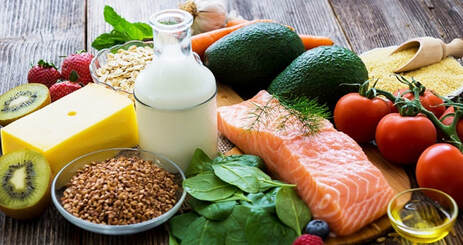 Choice of Foods has a Great Share in Determining How you Fare in Cholesterol Levels Choice of Foods has a Great Share in Determining How you Fare in Cholesterol Levels While cholesterol indeed exists as the villain in our lives it is in our hands to make it a hero by pursuing a healthy lifestyle that’s filled with nutritious foods, daily exercise, good sleep and peace. You might like to indulge in a double cheese burst pizza or a fried chicken tub at the mall but once you remind yourself of all the side effects, I don’t think anyone would ever try to include any of those as a regular part of our meals. There are theories and news that might persuade us to try anything that’s simple and easy, for instance, we have a latest research that eating an avocado a day lowers bad cholesterol levels. Many would instantly hang on to every word of the research and try it out as this doesn’t tire the mind or strain the body but only includes something that we all love to do-eat food! Be sensible and understand that it’s not one single ingredient or food that can bring about radical changes to your body and its well-being but a couple of factors that together work hard to keep us healthy. Enraging Overweight Kids by Teasing rather than Encouraging them to Workout Leads to Weight Gain10/13/2022 Childhood is a tender stage wherein every comment, criticism, appreciation or remark leaves an impression deep within their minds. The world is not filled only with people who love and care but is also an abode for those who mock, bully and tease. Such reckless actions are predominantly seen in school-going children who are major victims to bullying or name-calling. Schools especially can be a brutal place for kids with obesity/overweight as they become the laughingstock of other students, called by names such as fatso, mocked, ridiculed and teased. Such actions and behaviors rip apart a child’s heart which basically expects love and care.
Pro bono Teasing? Until now, we have heard many suggestions and theories that making fun of an overweight/obese child prompts them to make diet and health-related changes to lose weight and improve their lifestyle but a recent study proves just the opposite. Researchers at the National Institute of Health (NIH) carried out a long-term study on the effects of teasing on obese children and published its result in the reputed journal Pediatric Obesity. Obesity among children is growing to be a major problem and the World Health Organization has estimated that there would be more than 70 million obese children in this world by 2025. Apart from severe health problems weight changes affect a child’s mental and emotional well-being to a great extent. The research by NIH was conducted on 110 children whose average age was around 11-12 years. Either these children themselves were overweight or had parents both of whom were overweight. Overweight parents were also considered as a part of the study because there are evidences showing that children of overweight parents tend to grow into obese adults later in life. At the start of the study these children filled out a questionnaire asking them details whether they were teased anytime about their weight. Almost 62% reported positively that they were indeed teased about their weight at least once and 21% kids who were not overweight but at a risk of weight gain also reported being subjected to such acts of mockery. The researchers followed-up on the kids for 15 years with an annual visit. Irrespective of their weight at the beginning of the study kids who were teased often about their weight gained 33% more body mass and 91% more fat per year compared to kids who were not teased. Those kids who were teased more about their weight gained more weight (approximately 0.20 kg more per year) and body fat over time, according to the authors of the study. Consequences of Weight-related Bullying Apart from weight gain, teasing and bullying increase stress levels promoting release of cortisol hormone that stimulates appetite and also increases the risk of depression and anxiety. Depression and anxiety lay the path for eating disorders, stimulate the individual to binge eat and makes the kid stay away from physical activity. These kids start avoiding gym classes, swimming sessions and sports fearing that other children who make fun of their attire and size. This withdrawal increases weight gain possibilities much more. Read more about eating disorders and their effect by visiting the website www.firsteatright.com. Body shaming has become dominant and this study proves it once again where more than 60% overweight children reported bullying. Sadly, it’s not only students who tease their fellow classmates or friends but also teachers and parents are involved in this. Parents and teachers must take the first step towards stopping this attitude. They must help kids understand how their teasing can make the overweight kid feel isolated and hurt his/her feelings, teach the overweight kid different strategies and ways to cope with such unruly behavior, encourage them to eclipse such teasing and move forward in life. Parents can be role models and take the initiative to improve their kid’s health-maybe go out for a walk together, play a game of football or plan a trek trip over the weekend. We receive enquiries on a daily basis asking for help with a ketogenic diet plan to lose weight. For those new to the word ‘keto’, the Keto diet might be the latest diet fad popular for the last couple of years but it is not something new to physicians and dietitians as they have been using it for treating epilepsy since the 1920s. The point of concern here is whether this type of diet plan is healthy and suitable for long-term practice as a weight loss strategy? Still, Keto’s fan base is only skyrocketing and Google searches are hitting new heights every day with more and more books publishing keto-friendly recipes and blogs covering every single aspect of this diet that attracts individuals. According to Sara Seidelmann, a nutrition researcher at Brigham & Women’s Hospital, Boston,” There’s absolutely nothing more important for our health than what we eat each and every day” and the effects of the Keto diet on our health stands as a big question mark!
Famously known as the high-fat, low-calorie diet people following the keto diet aim to achieve 70-75% of their calorie needs from fats, 15-20% from proteins and 5-10% (20-50 grams per day) from carbs. This is in startling contrast to the recommendations of health experts who say that a healthy diet plan should include 45-65% from carbs, 20-35% from fats and 10-35% from proteins. Such reduction in carbs literally means that individual has to avoid even fruits, starchy veggies, pulses and whole grains but rely on eggs, chicken, meat, fish, and butter to fill their tummy. Getting its name from a process called ketosis (happens when there is not enough energy from carbs to perform activities and hence the body uses stored fat as an energy source) the diet is designed in such a way that the process is initiated paving way for weight loss. Such disproportionate macronutrient proportions don’t comply with any of the nutritional guidelines and must be branded only as a passing diet fad. How on Earth do we think that such a restrictive diet plan could add nutrition and health to the body or even be suitable for long-term? Not Everyone’s Cup of Tea Though we don’t know for sure how the keto diet works wonders on people prone to seizures researchers say that there are potassium channels in the brain that can have a quieting influence on electrical excitation and the channels work better when the brain uses ketones for energy. Research also suggests that a ketogenic diet can treat people with obesity, type 2 diabetes and fatty liver disease. But the National Lipid Association (NLA), USA strongly states that even these individuals who benefits from the diet plan must pursue it for not more than 2-6 months and not without the supervision of a physician or dietitian. NLA also warns that people suffering from dangerously high cholesterol levels must avoid keto and other low-carb diets as following this diet plan might lead to increase in LDL cholesterol (LDL-C) levels which in turn raises the risk of cardiovascular disease. The World Health Organization too states that overconsumption of butter and bacon might land a person with colorectal cancer risk. Such strict suggestions indeed worry us but as per NLA’s statement, extremely low-carb diets might aid in short-term weight loss but they show mixed effects on health markers that can contribute to heart disease risk. Weight loss is possible but various recommendations show that the weight loss achieved by following a keto diet is similar to what people achieve by following other diets that allow increased consumption of carbohydrates. A meta-analysis of 13 randomized-control trials showed that people on a ketogenic diet lost more after a year and improved their triglycerides, HDL and blood pressure compared to those on a low-fat diet. But after two years of follow-up there was an improvement in HDL levels but no difference seen in weight loss between the two groups (https://www.smh.com.au/lifestyle/health-and-wellness/can-eating-fat-help-you-lose-weight-lets-look-at-the-ketogenic-diet-20160929-grr1vo.html). There is absolutely no way that the keto diet can be followed forever given its suggestion of macronutrient composition. If you are going to be an ardent keto follower you cannot eat more than an apple to fulfil carbs (1 apple provides roughly 20 grams of carbohydrates) intake or munch on a banana (20-30 grams of carbs). In case of young and healthy adults removing abundant carbs might not be extremely dangerous but the point is whether it is necessary. You are sure to experience issues such as bad breath, constipation, monotony of eating the same foods, imbalanced food group intake (restricting an entire food group can never do good anytime) and flu-like symptoms but there have also been claims of reduced hunger due to reduced secretion of ghrelin hormone and increased weight loss. There are some individuals who have lost 2-3 times more weight than individuals with other eating habits but most of it is based on short-term results. Besides, every person pursuing the keto diet must be disciplined, extremely focused and have sufficient means, energy resources and time. Despite such rigid requirements the diet never fails to impress people with its results. Though the diet benefits the group of people mentioned above there is need for more research to determine whether such strict carb restrictions are needed to enjoy these perks. There are no long-term trials of low-carb diets and health outcomes and we don’t have any clinical outcome events like heart attacks, strokes, cardiovascular deaths diabetes events and total mortality. Also, weight loss is not easy for anyone and it depends on various factors that have a strong impact on the person’s ability to lose weight and maintain the lost weight. Any diet can promote weight loss as the basis of every diet is to reduce the amount of net energy consumed. It is essential to pursue a diet that can become your lifestyle and replenish your health rather than leaving you antisocial or fatigued. Hence, following a well-balanced diet with social support, behavioural strategies and ample physical activity is the best way to lose weight or maintain the lost weight. References Low-carb Keto Diets have Some Health Benefits and Some Risks: https://www.reuters.com/article/us-health-heart-keto-diet/low-carb-keto-diets-have-some-health-benefits-and-some-risks-idUSKBN1WH2H4 High on Fat, Low on Evidence: The Problem with the Keto Diet: https://www.theguardian.com/lifeandstyle/2019/jan/07/high-on-fat-low-on-evidence-the-problem-with-the-keto-diet What About Everyone Else: Is Keto Diet Safe in the Long Term? https://www.rd.com/health/healthy-eating/is-keto-diet-safe/ You Asked: Should I Try the Ketogenic Diet? https://www.smh.com.au/lifestyle/health-and-wellness/can-eating-fat-help-you-lose-weight-lets-look-at-the-ketogenic-diet-20160929-grr1vo.html Having an infant or a toddler in the house is a pleasure to the family but it might as well be a painstaking job to ensure the safety of the child in and around the house. Parents nowadays take a number of steps to keep their homes child-friendly: they install rubber edges for tables, avoid getting sharp-edged items, don’t leave any dangerous things within a kid’s reach and even arrange for wall-to-wall carpets. Remember those days when you built a pillow wall around your sleeping child to prevent him/her from falling off the bed? We cannot forget those golden days when we were constantly on the move removing small objects and dust that might attract our kid’s attention. Even when they grow into teens, they bring upon problems such as concussions or fractures due to their over-spirited sporting skills. Despite mammoth efforts, there are daily cases of emergency reported in hospitals complaining of a sudden fall of the infant from the high-raise bed or a concussion acquired from playing football. We can see angry and helpless parents accusing each other of how the situation could have been avoided in the first place and the helpless child either lying unconscious or bleeding on the emergency table!
We now have a new study from USA showing that traumatic brain injuries in kids and adolescents are mostly associated with daily consumer products and activities such as home fixtures and sporting practices. According to the American Association of Neurological Surgeons (AANS) a traumatic brain injury (TBI) is defined as a blow to the head or a penetrating head injury that disrupts the normal functioning of the brain and occurs when the head hits an object suddenly or when an object pierces the skull and enters the brain tissue. TBI is predominantly present in males. Believe it or not, boys and young men still seem to be naughtier trying to act on an impulse, are engaged in dangerous sporting activities and try to outpower each other ending up in TBI and other issues. Is it all wired in the genes? This is something to think upon and for inputs on this you can always visit www.firsteatright.com for information. Non-fatal Traumatic Brain Injuries The study performed on children aged <1-19 years showed that nearly 3 of 4 nonfatal TBIs that necessitated a visit to the emergency department (ED) involved common consumer products. During the study period more than 4 million pediatric TBI patients were admitted to the ED of which 72% (three-fourth of non-fatal TBIs) of them were linked to consumer products. The product groups associated with TBI included sports/recreation, home furnishings and fixtures, home structures and construction materials, child nursery equipment, toys, home electronics, personal use products and other similar products. In the sports category, football, basketball and bicycles were common causes; in the household category, beds, chairs and tables were predominant contributors; and in the home structures and construction materials product group floors, stairs and ceiling/walls led to the greatest number of TBIs. Beds were the most common cause of TBI in kids younger than 5 years, bicycles were the common culprits in kids aged 5-9 years and football was primarily associated with TBIs in children between 10 and 19 years. Uneven flooring and fabricated stairs commonly lead to falls due to slipping, tripping and falling. This finding is not something new but the statistics are alarming. Kids younger than 5 are mostly indoors which prompts them to explore the house as much as possible. Interestingly, car seats were quoted as the fifth leading cause of injury in infants. While the seats ensure better safety when used rightly many parents use them as baby carriers in a risky way. Kids between 5 and 9 start playing outdoors on their own and are often seen cycling on their tri- or bicycles that can lead to falls and injuries during the initial days of practice or during those times when they race, and children above 9 years are engaged in active sports, their energy levels are great and they cannot be curtailed to play slowly or consciously-such is their age. But doctors can play a role in preventing TBI. While diagnosing and treating the physician asks about the background of the head injury and also discusses its symptoms. During these times, the doctor can utilize the opportunity to talk to parents and kids about the precautionary and safety measures they can take to avoid such injuries in the future. Even during visits that don’t pertain to TBIs the physician can educate their patients on the risks of TBIs and help them go through measures that can minimize the risk. Parents, please never leave infants and toddlers unattended. You might be very busy but kids deserve our full attention. The child might seem to be engrossed in playing the xylophone for a minute but the moment you disappear he/she might try to insert his/her hand into the plug socket or jump off the bed. Older children too need proper guidance and instructions before they are sent off for playing games or riding a bicycle. Work can be completed anytime but life lost cannot be replaced! We cannot be perfect and there are chances that children might hit, twist, fall or hurt themselves in the process of growing up (and this is not bad!) but we should take every action possible to ensure that the kid is not pushed into dangerous situations due to our lack of concentration. |
AVOID FRAUD. EAT SMART.+91 7846 800 800
AuthorDietitian & Nutritionist Dr. Nafeesa Imteyaz. Archives
July 2024
Categories
All
Dr. Nafeesa's Blog @blogspot |
- Home
- Written Testimonials
- Consult
- Clinics
- Blogs
-
Diet & Nutrition
- Diabetes Reversal
- IVF IUI not needed for PCOS PCOD Infertility
-
Medical Nutrition
>
-
Disease & Conditions
>
- Infertility | PCOS
- Diabetes Mellitus
- Cholesterol
- Hypothyroid
- Kidney Problems
- Hypertension
- Cardiovascular Diseases
- Liver Diseases
- Gastro intestinal disorder
- Cancer
- Metabolic Disorders
- Orthopedic Disorders
- Eating Disorders
- Dietary Recall
- Weight Record Filled By Clients
- Online Payment Transaction Details
- Online Clients Weight Check Form
- Our Program Package Service Charges
- Weight Record 2017 Clients
- Measurements sent by Clients
- Terms & Conditions Of Payment
- Thanks. Your Form is Submitted
- Video Testimonials
- Lifestyle & Wellness
- Lifestyle & Wellness Blog
- Allergy & Intolerance
- Weight Loss / Gain
- Weight Loss / Slimming Blog
-
Disease & Conditions
>
- Life Cycle Nutrition >
- Sports Nutrition >
- Integrity in Nutrition
- Knowledge Centre
© COPYRIGHT 2022. ALL RIGHTS RESERVED. FRST HEALTHCARE PVT LTD.
Dr. Nafeesa Imteyaz of First Eat Right clinic, is the Best Dietitian Nutritionist in Bangalore. Best Dietitian Nutritionist in Pune. Best Dietitian Nutritionist in Hyderabad. Best Dietitian Nutritionist in Chennai. Best Dietitian Nutritionist in Mumbai. Best Dietitian Nutritionist in Delhi. Best Dietitian Nutritionist in Kolkata.

